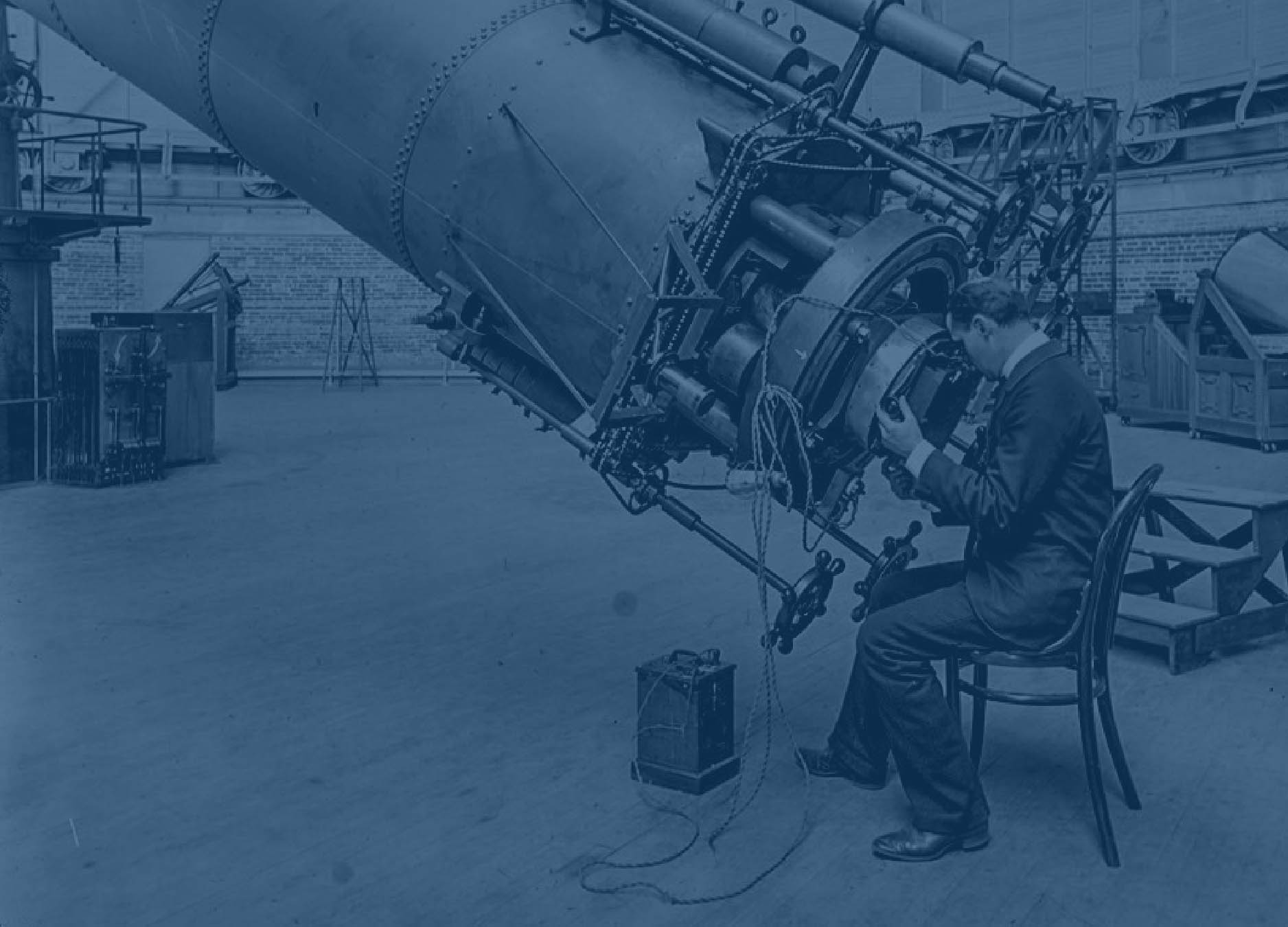
Legacy
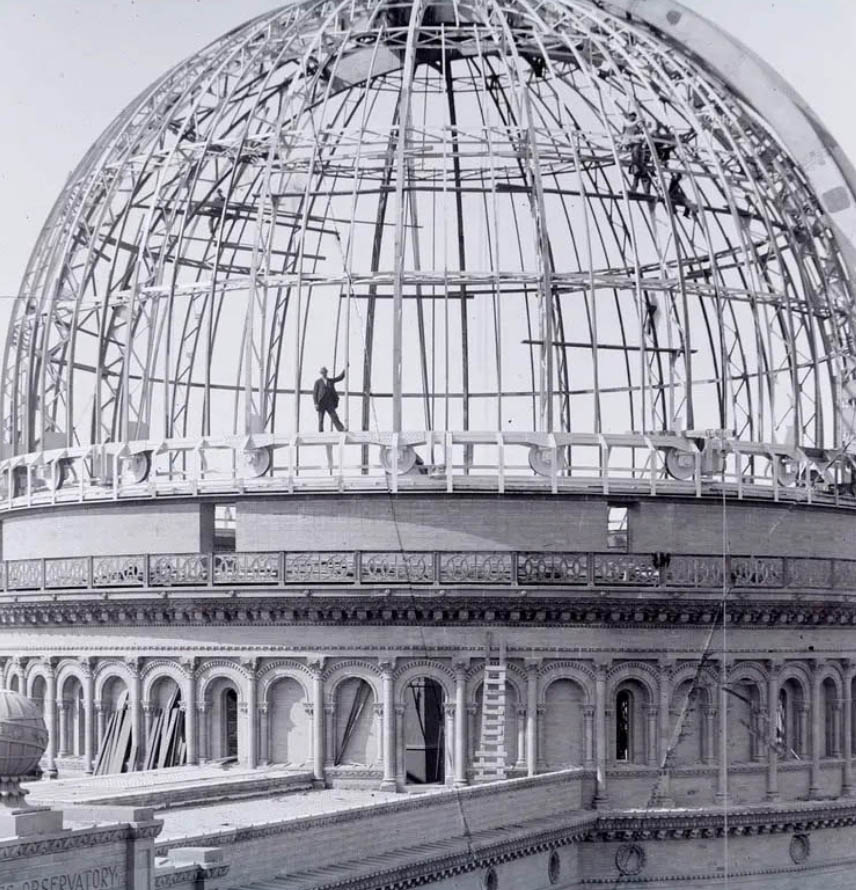
125 years,
billions of galaxies,
and still counting.
If astronomers had a walk of fame,
it would be here.
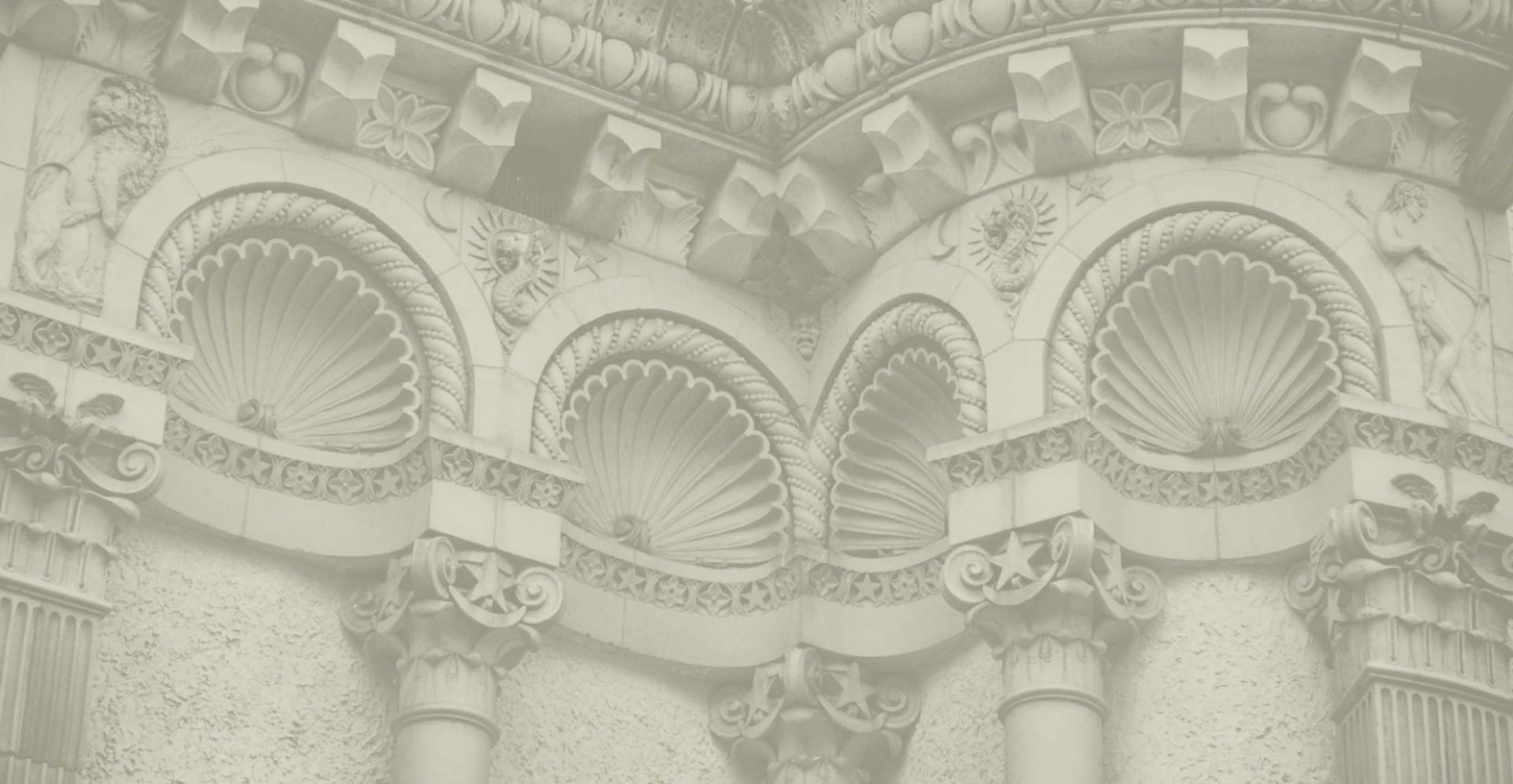
An observatory destined for greatness.
In 1892, a brilliant, young professor of astrophysics at the then-new University of Chicago learned of two 40-inch telescope lens blanks collecting dust in a warehouse. They were just what George Ellery Hale was looking for to build the observatory of his dreams. He convinced the university’s president, William Rainey Harper, to acquire the lenses and secure what was essentially a blank check from Chicago tycoon Charles Tyson Yerkes to build a different kind of observatory.
Yerkes Observatory, housing not only a telescope but also laboratories, workshops, and libraries, first opened its dome to the night sky in 1897, and soon attracted the brightest lights of astronomical science.
For nearly a century, a virtual who’s who of astronomy surveyed outer space through the Yerkes Great Refractor. Sherburne W. Burnham cataloged 13,665 star systems. Edward Barnard discovered the large dark clouds of the Milky Way. Optician Frank Ross introduced the wide-angle lens to astronomy. Edwin Hubble photographed the first evidence of the expansion of the universe. Nancy Grace Roman, NASA’s first Chief of Astronomy, did her graduate work here, as did Carl Sagan.

The birthplace of astrophysics.
Combine astronomy with physics and you get astrophysics, a branch of science that uses the principles of physics to understand the makeup of celestial bodies. George Ellery Hale was one of its pioneers, which is why Yerkes is credited as the place it all began.
The study of astrophysics may have been a reason why Yerkes Observatory hosted one very famous visitor—Albert Einstein—during his first trip to America in 1921.
Today, Yerkes remains unsurpassed as the world’s largest refracting telescope. When you participate in one of our stargazing programs, you are looking through what is still one of the most powerful telescopes available to the general public. As you trace the footsteps of astronomy’s greats you can imagine your own explorations of the heavens.
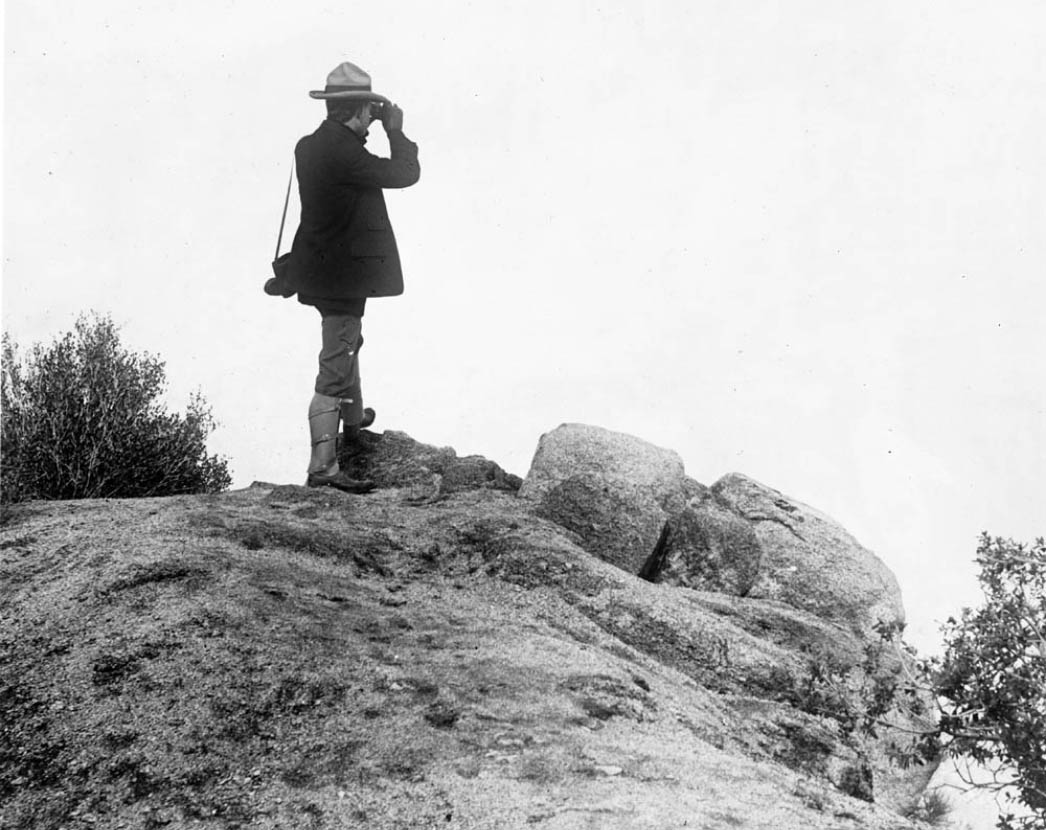
Our founder, the visionary George Ellery Hale, never missed a chance to look into the future.
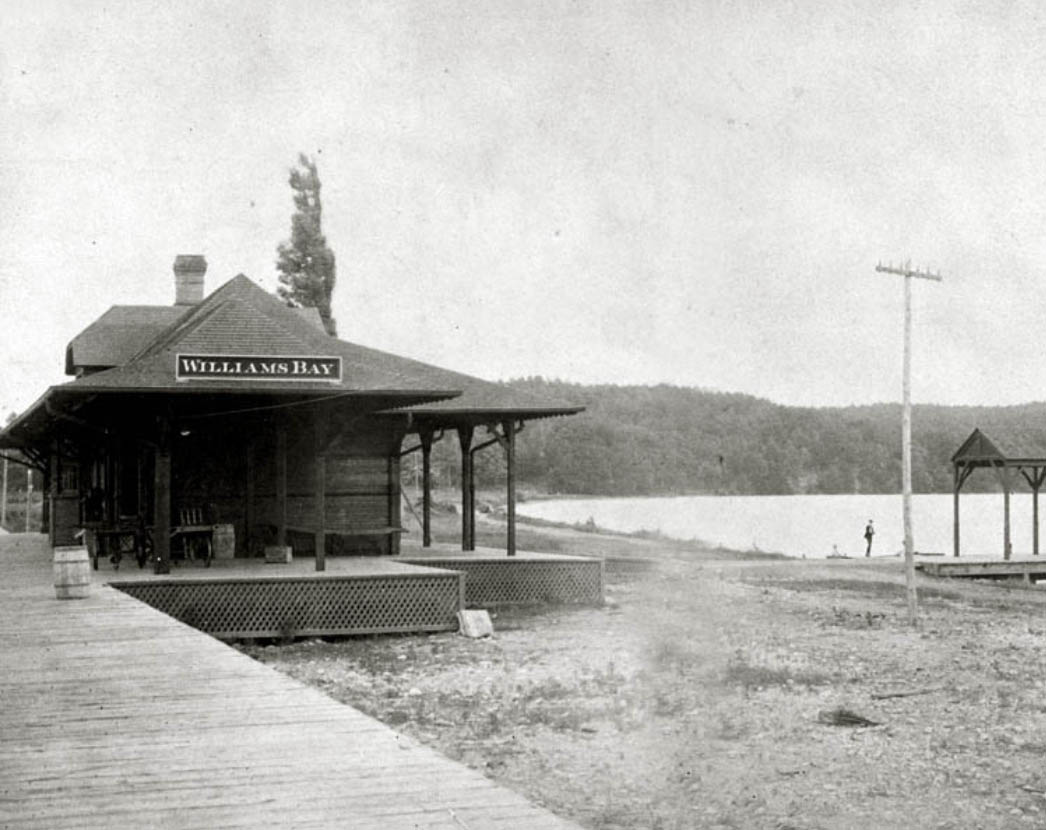
None of this would’ve been possible without the train that began in Chicago and ended in Williams Bay on the beach just down the road from the Observatory.
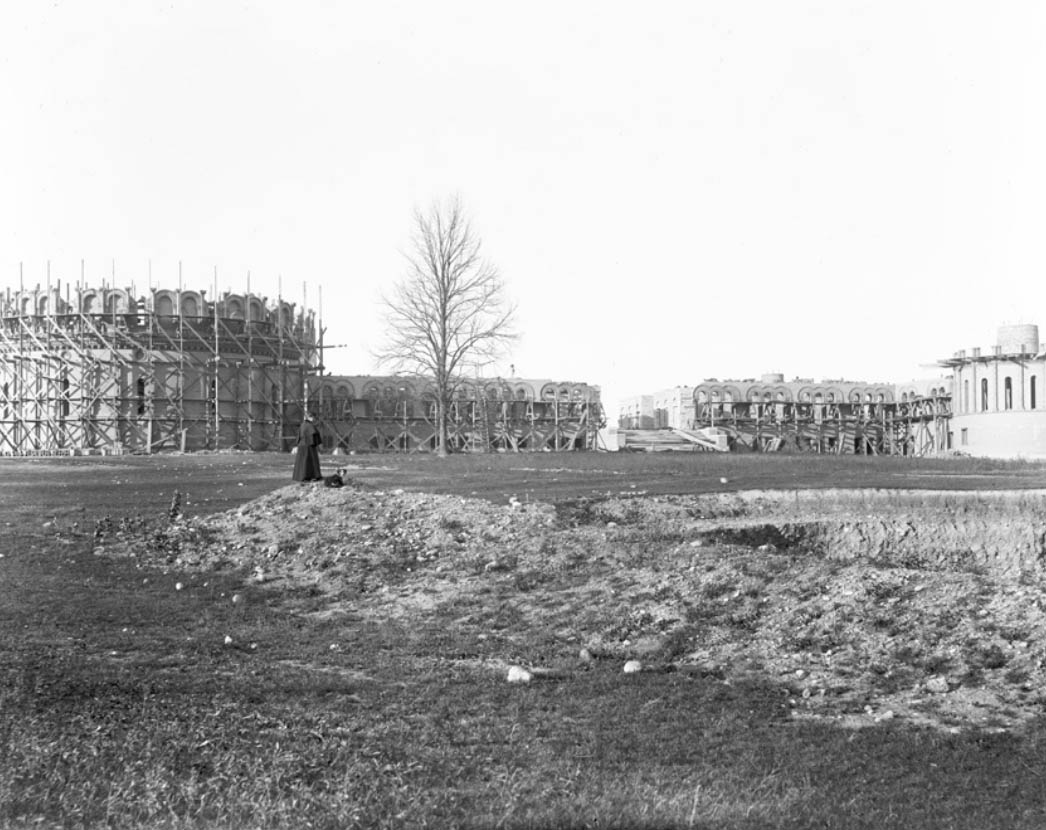
From Evelina Hale’s 1895 picture, it was becoming clear that her husband George’s design ideas were in symbiosis with architect Henry Ives Cobb’s masterpiece.
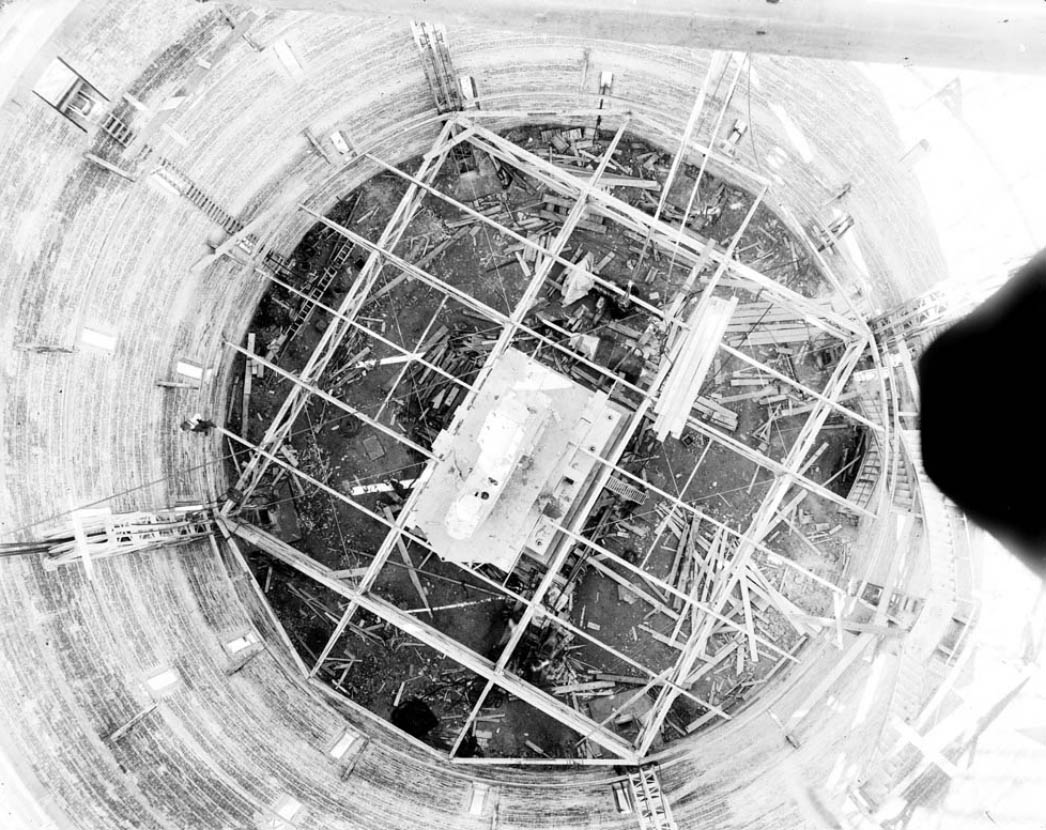
First, the builders had to look down into the dome in order to create space for astrophysicists to look up into the cosmos.
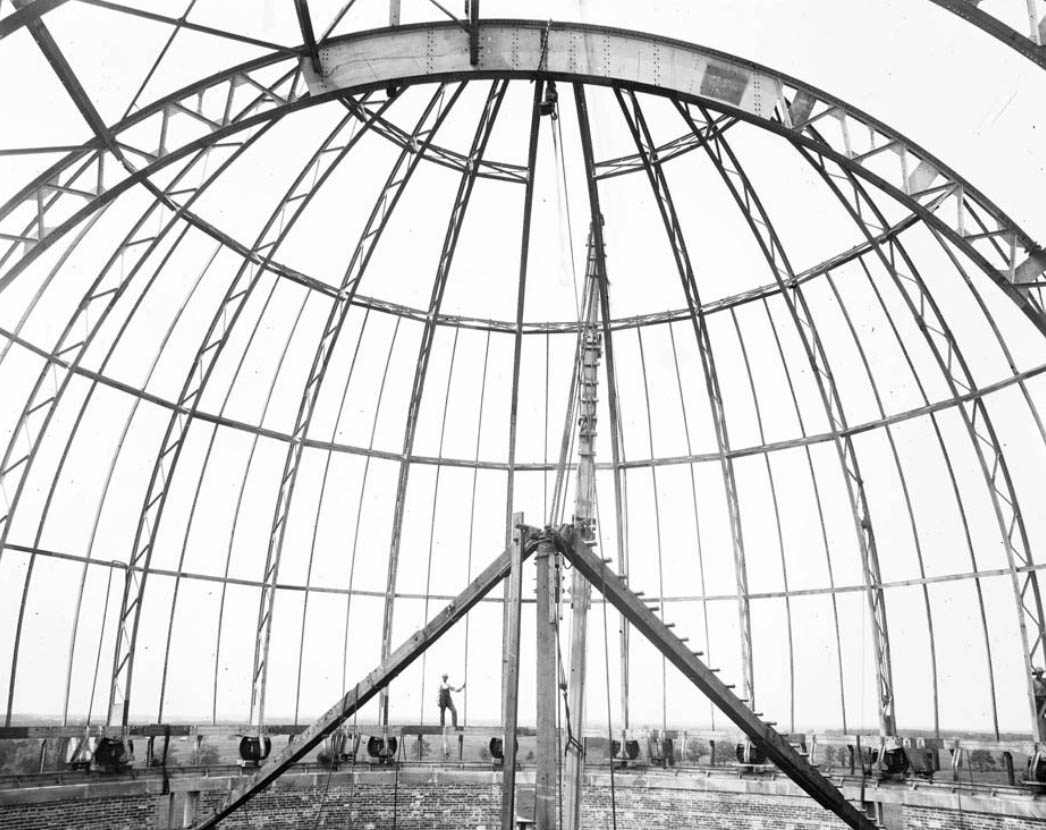
As the Great Dome took shape, Hale, Yerkes, and Harper became keenly aware that astrophysics must be initially shaped by architects, engineers, carpenters, lens makers, and master craftspeople in many fields.
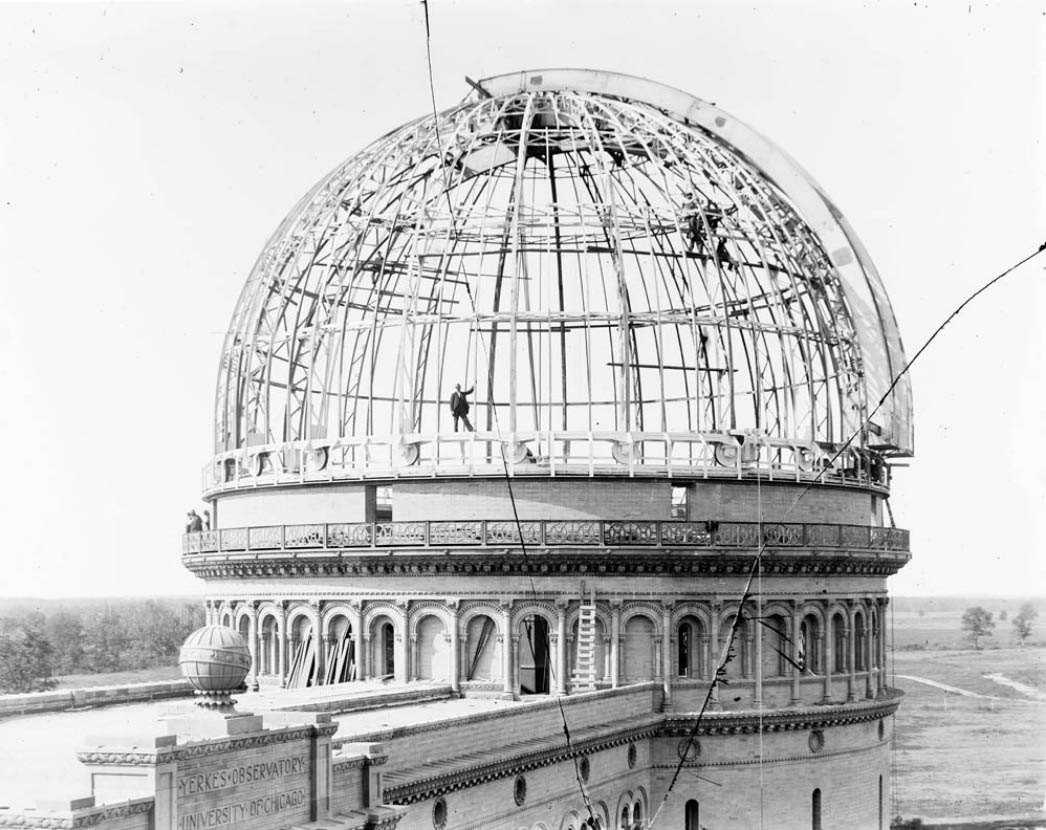
Once considered by many to be like witchcraft, astrophysics would never again be devalued when Yerkes Observatory was up and running. The women and men who worked in this Dome and with its telescope would explain the nature of the universe like no group of people ever had.
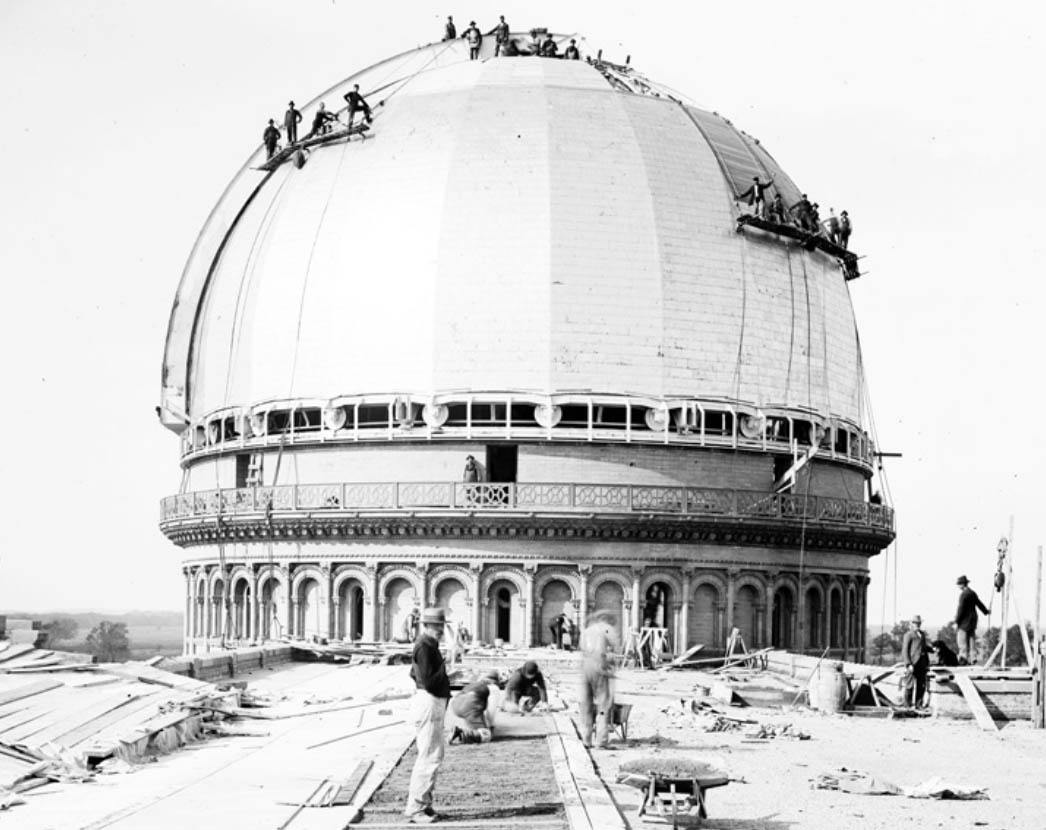
Once the biggest of the three domes was cemented and tinned, it was on to the next two. Finally on October 21, 1897, Yerkes Observatory opened and the first-ever Department of Astrophysics at a university had its new home.

Astronomical in every way.
Almost from the beginning the Yerkes telescope came to be known as the Great Refractor, a moniker it fully lives up to. The barrel of the telescope is 64 feet long, weighs six tons, and was built of steel from Carnegie Steelworks in Homestead (Pittsburgh), Pennsylvania. It pivots on a German equatorial mount at the top of a pier that stands 65 feet tall from its base. The column, constructed of concrete, brick and steel, is secured 40 feet into the ground. The entire telescope is estimated to weigh 82 tons. Surrounding it is a hardwood floor, 75 feet in diameter, that can be raised or lowered 23 feet by an electrically powered system of cables, pulleys, and weights so astronomers can see through the telescope regardless of its angle.
The Great Refractor is not the only sight to behold at Yerkes. Two smaller domes house 40-inch and 24-inch reflecting telescopes, along with smaller instruments on display.
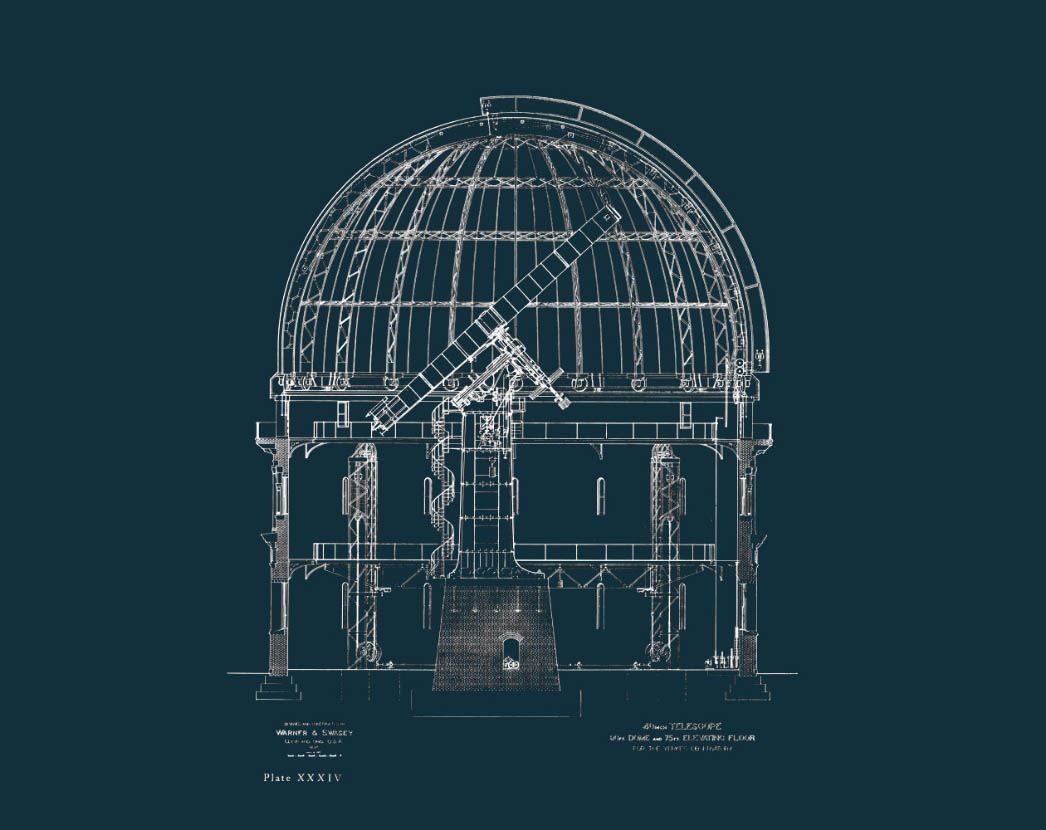
Cutaway drawing of Yerkes Observatory’s 40-inch telescope, 90-foot dome, and 75-foot elevating floor
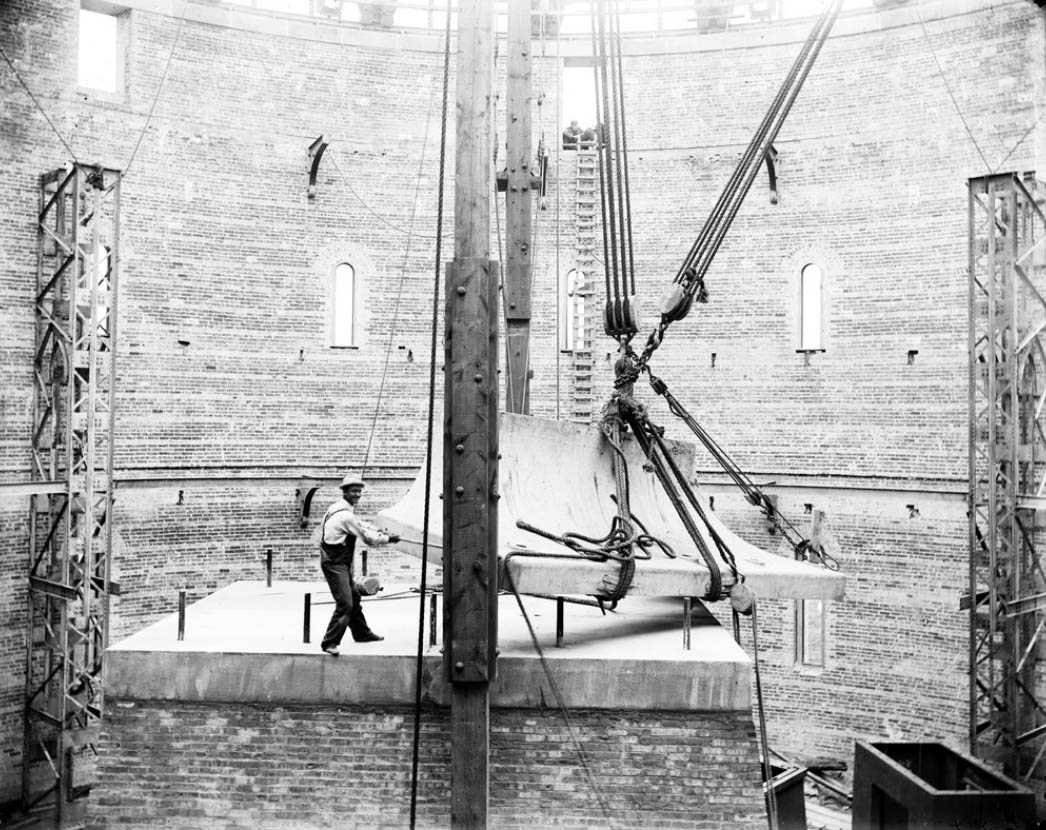
Warner & Swasey of Cleveland designed and built the base for the Great Refractor. The base goes 40 feet into the ground, which in 1896, allowed these workers to keep building toward the sky.
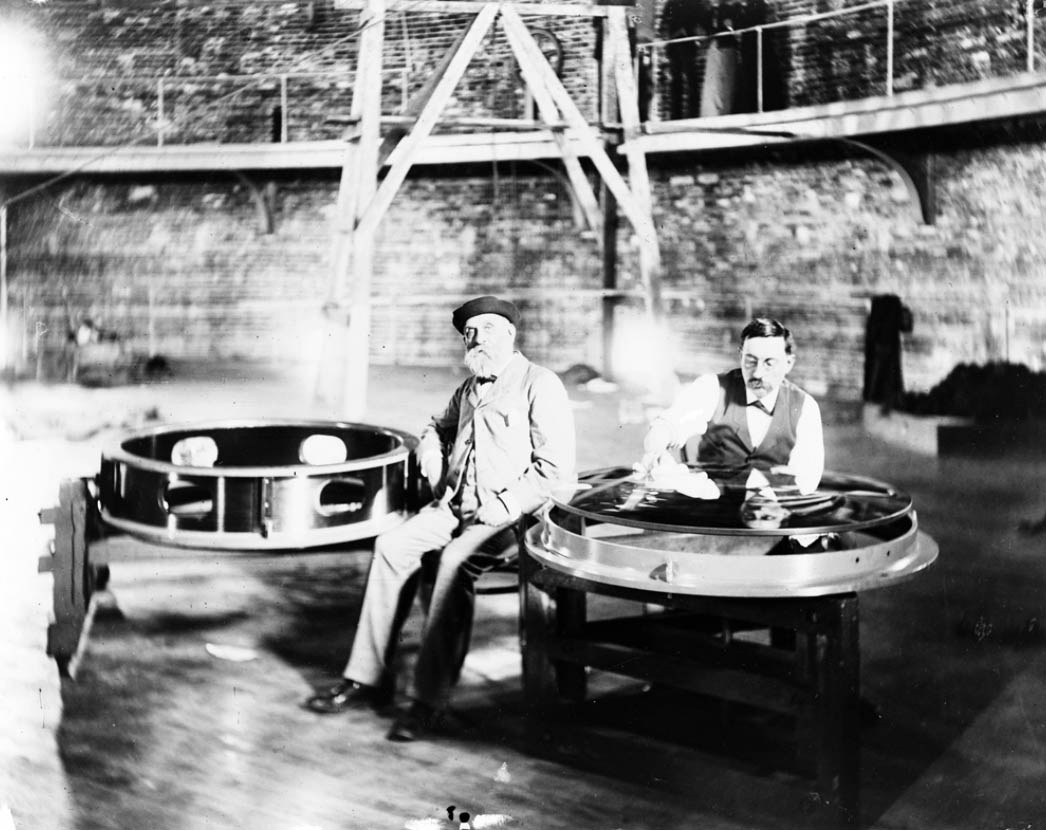
The 40-inch lenses were cut and shaped by Alvan Clark & Sons of Cambridge, Massachusetts. Alvan is seen here in 1897 on the Yerkes elevator with Carl Lundin preparing the objective lens for the Great Refractor’s tube.
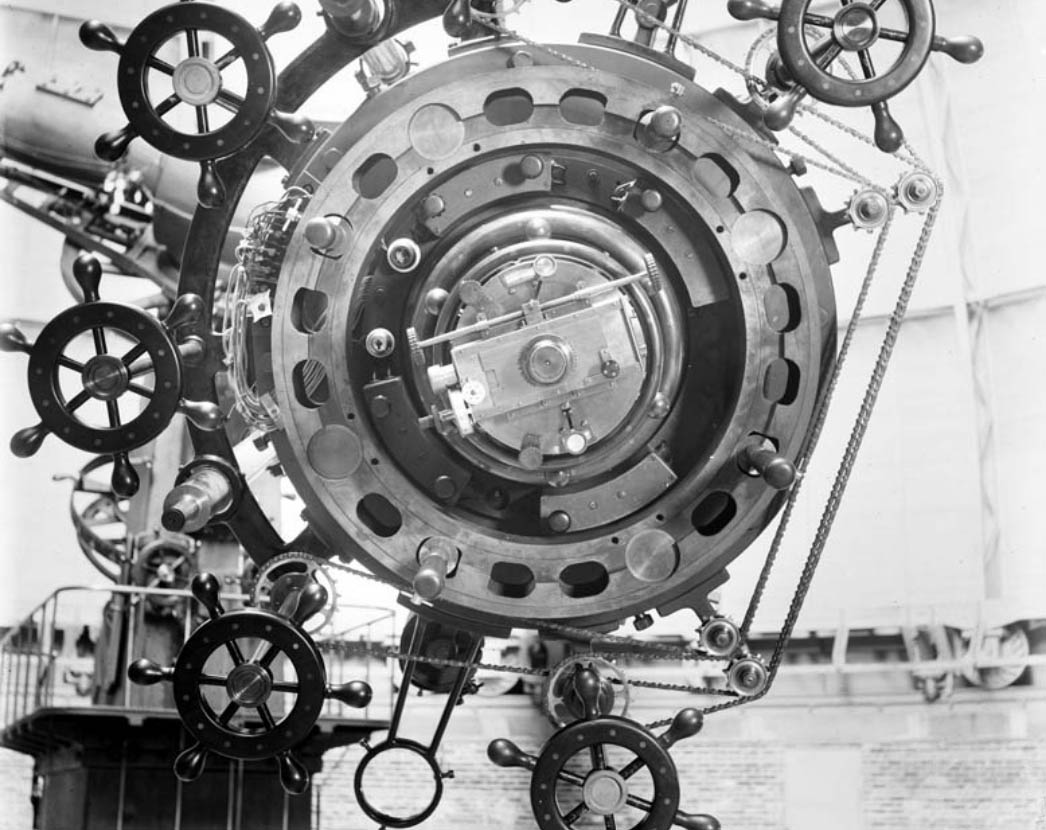
The eyepiece itself is a sight to behold. Think about eyeglasses for your face. These are eyeglasses for space.
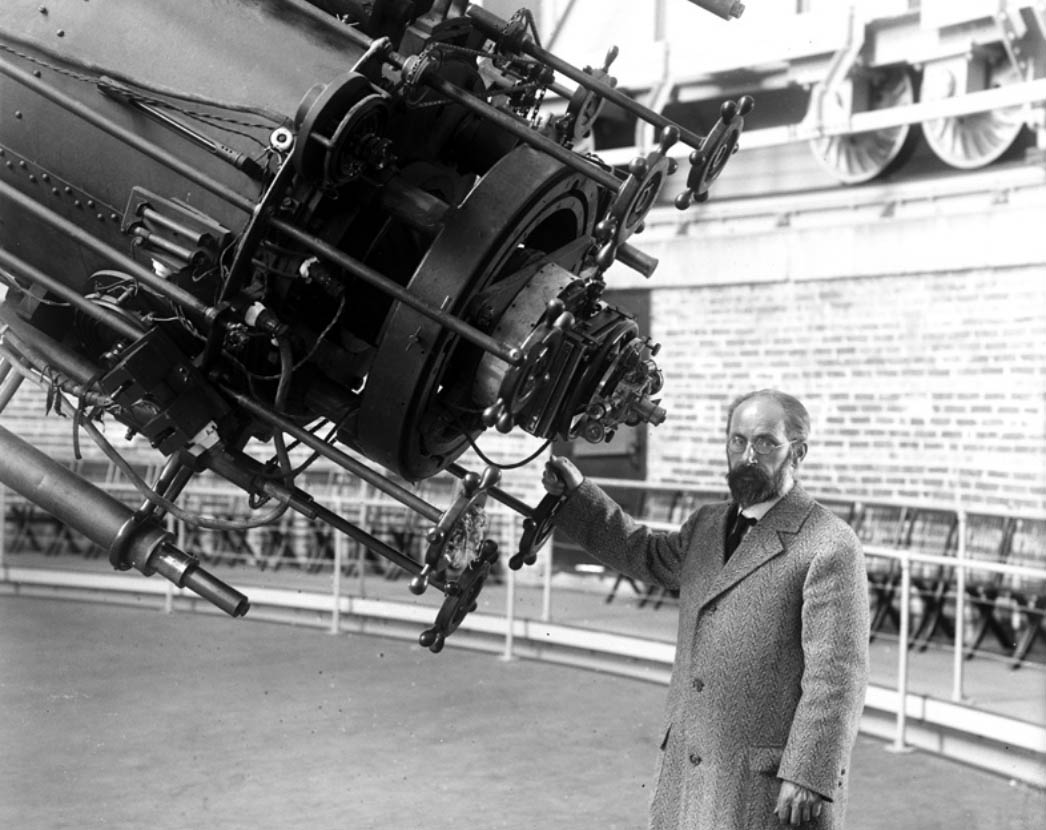
Belgian-American George Van Biesbroeck discovered three comets, 16 asteroids, and 43 double stars at Yerkes.
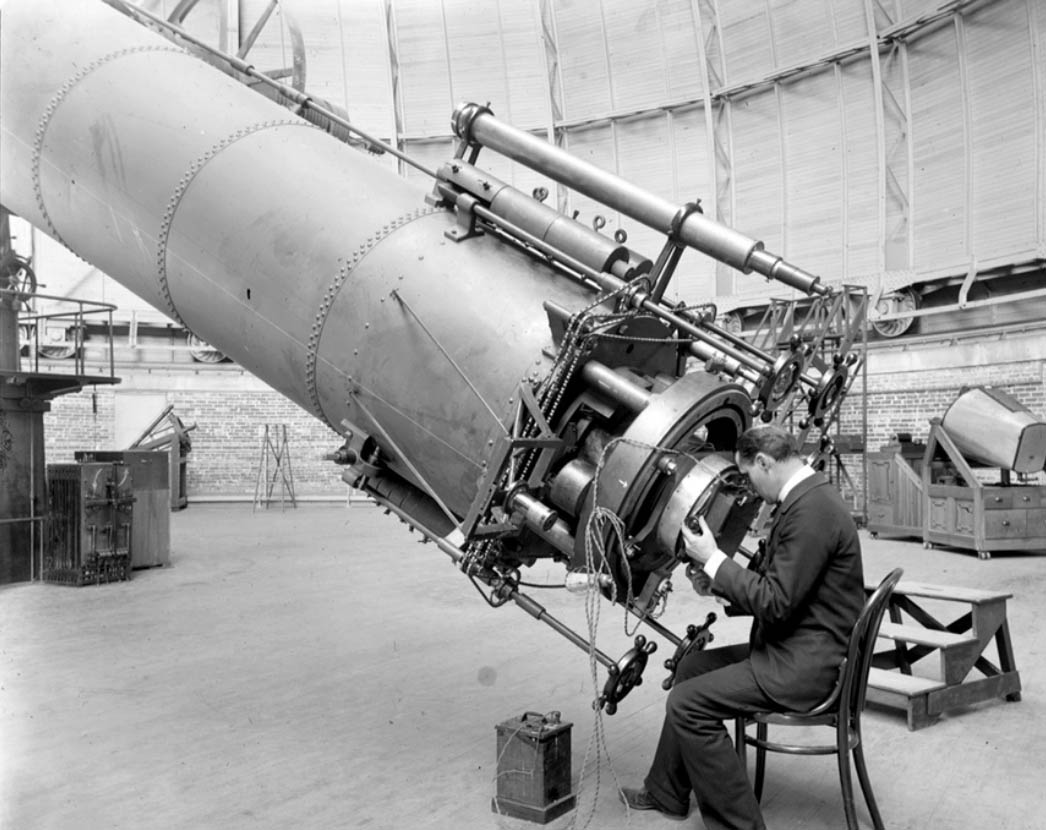
Furniture maker turned optical designer George Willis Ritchey showed the world that the Great Refractor could take color-corrected pictures by placing a yellow filter in front of a glass plate. By the way, Yerkes has a collection of 180,000 of those plates. Thanks, George!
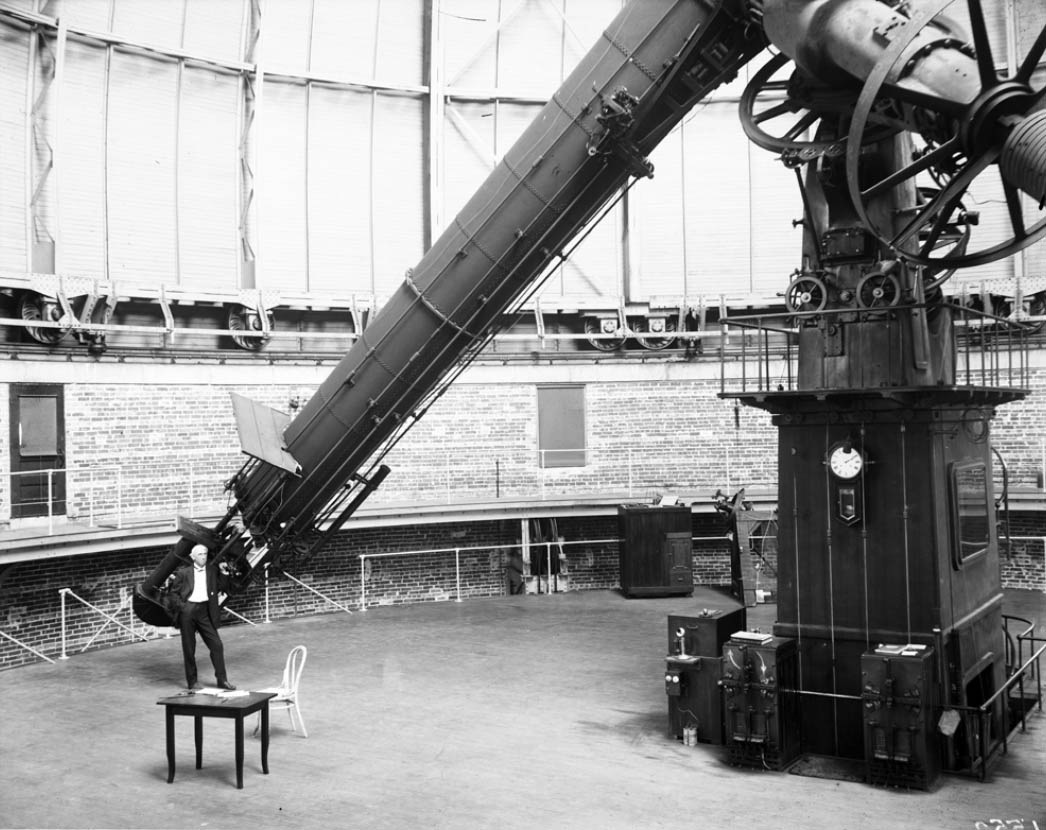
Edward Drake Roe, a tall, formidable professor of astronomy, is dwarfed by the mass of the entire telescope.
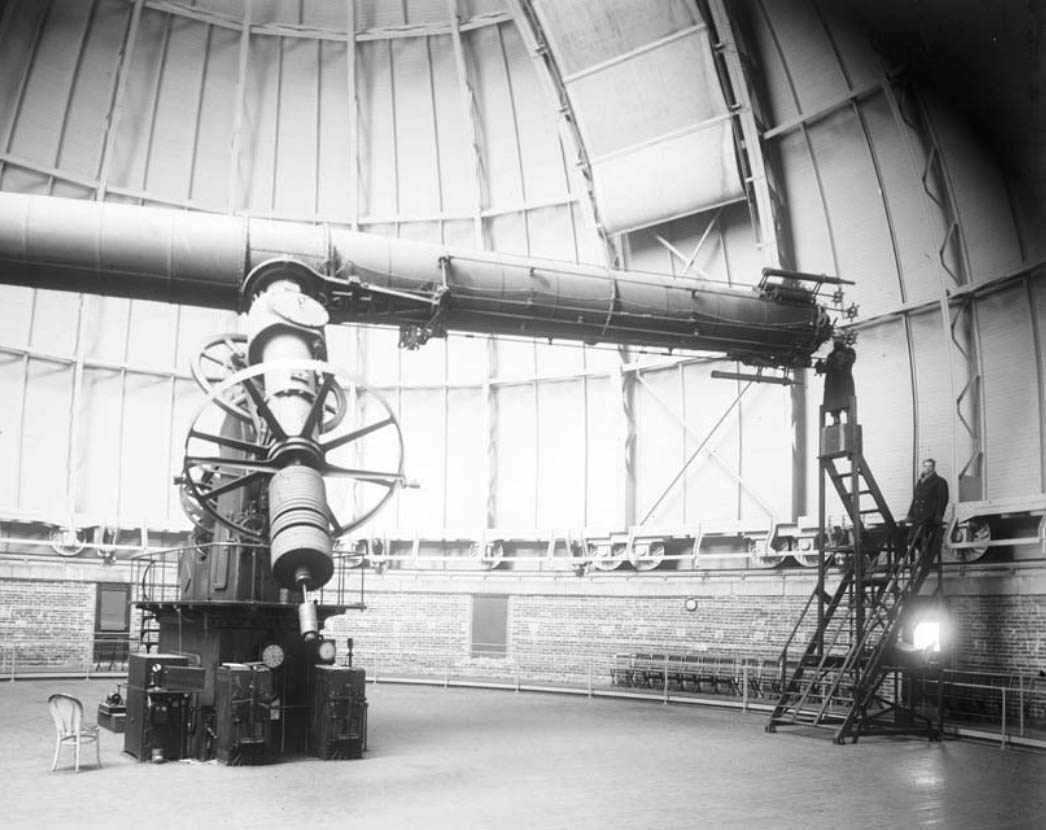
Chief photographer George C. Blakeslee took this shot of astronomers William Morgan and George Van Biesbroeck in 1927. Tracing the history of photography in general, one lands over and over at Yerkes’ collection of custom cameras, lenses, spectroscopes, heliostats, slides, plates, and so much more.
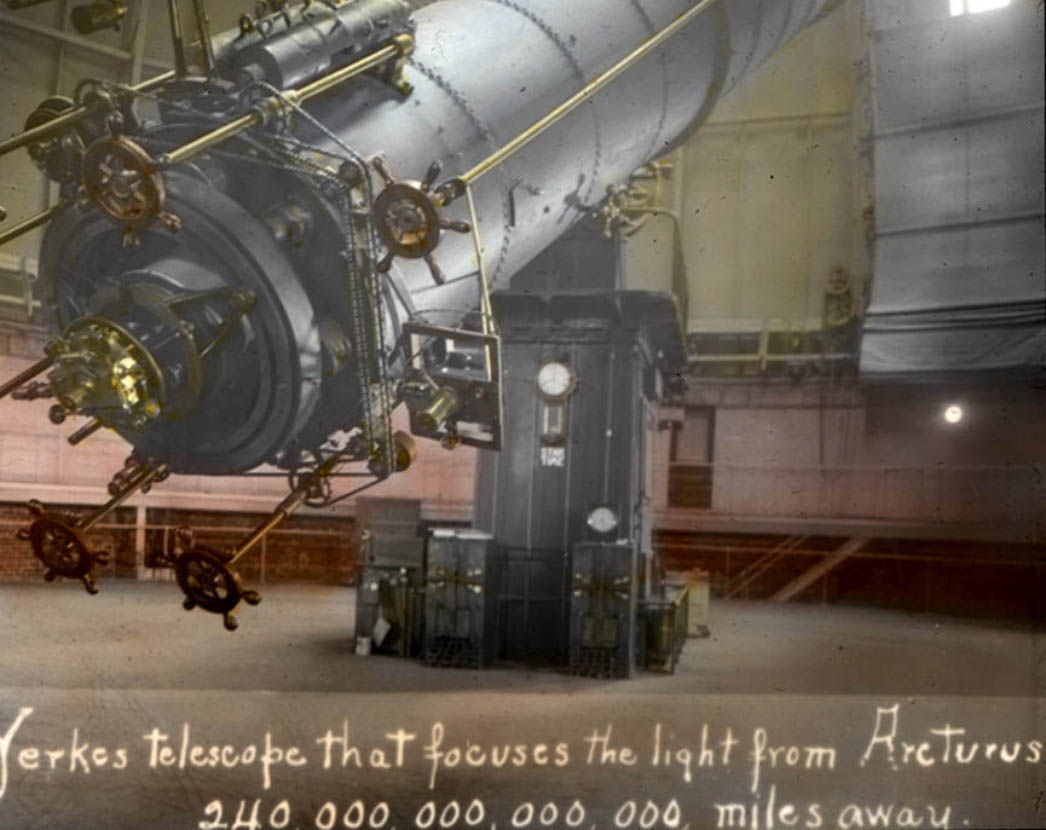
On the lantern slide, this photo reads, “Yerkes telescope that focuses light from the star Arcturus 240,000,000,000,000 miles away.”
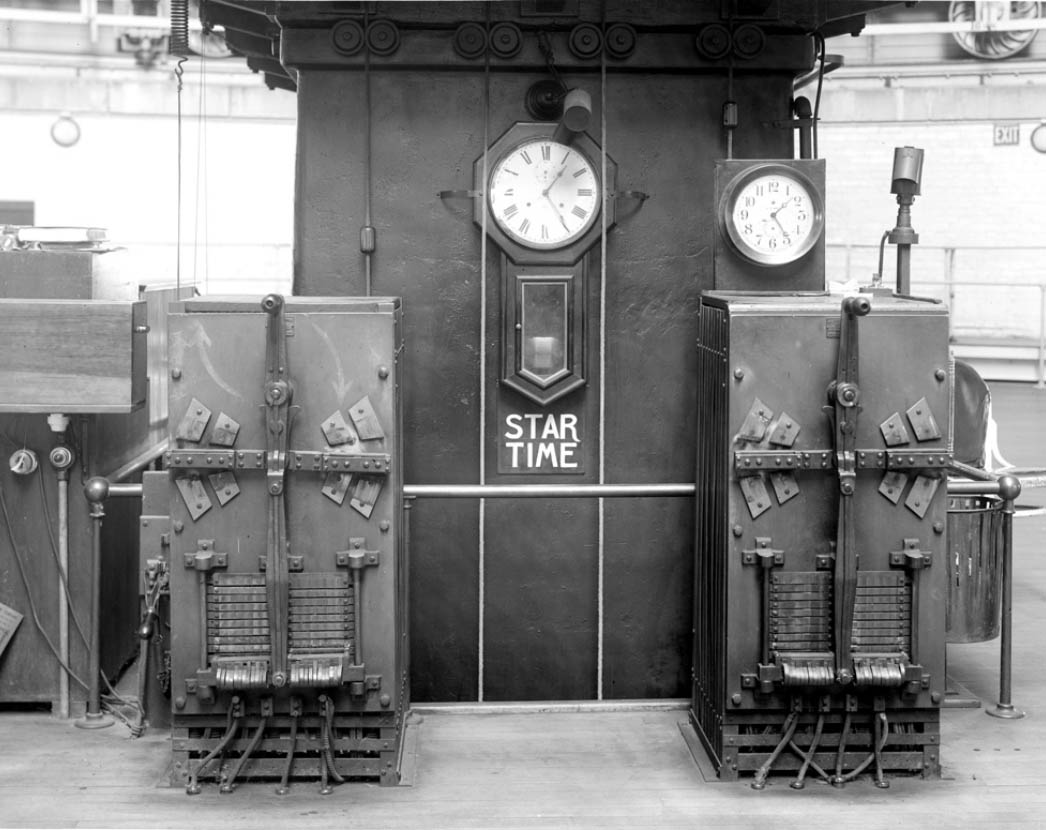
A telescope that changed the way we see the universe deserves controls this cool.

Equally stellar architecture and grounds.
It doesn’t get any better than standing in the actual place science history was made. Or does it? In fact, the architecture of Yerkes Observatory and the landscape plan both make compelling cases to visit. The Beaux Arts and Romanesque building was designed by Henry Ives Cobb, the architect who drew many of the imposing gothic structures at the University of Chicago. Yerkes is at once ornate and stately and also fanciful and irreverent with caricatures of the major players in its history sculpted in the stone columns.
Surrounding the buildings are 50 acres originally planned by Olmsted Brothers, the firm founded by the legendary Frederick Law Olmsted, which designed New York’s Central Park. Yerkes, a partner of the Olmsted 200 campaign celebrating the 200th birthday of Frederick Law Olmsted, is undertaking a restoration of the grounds to the original plan.
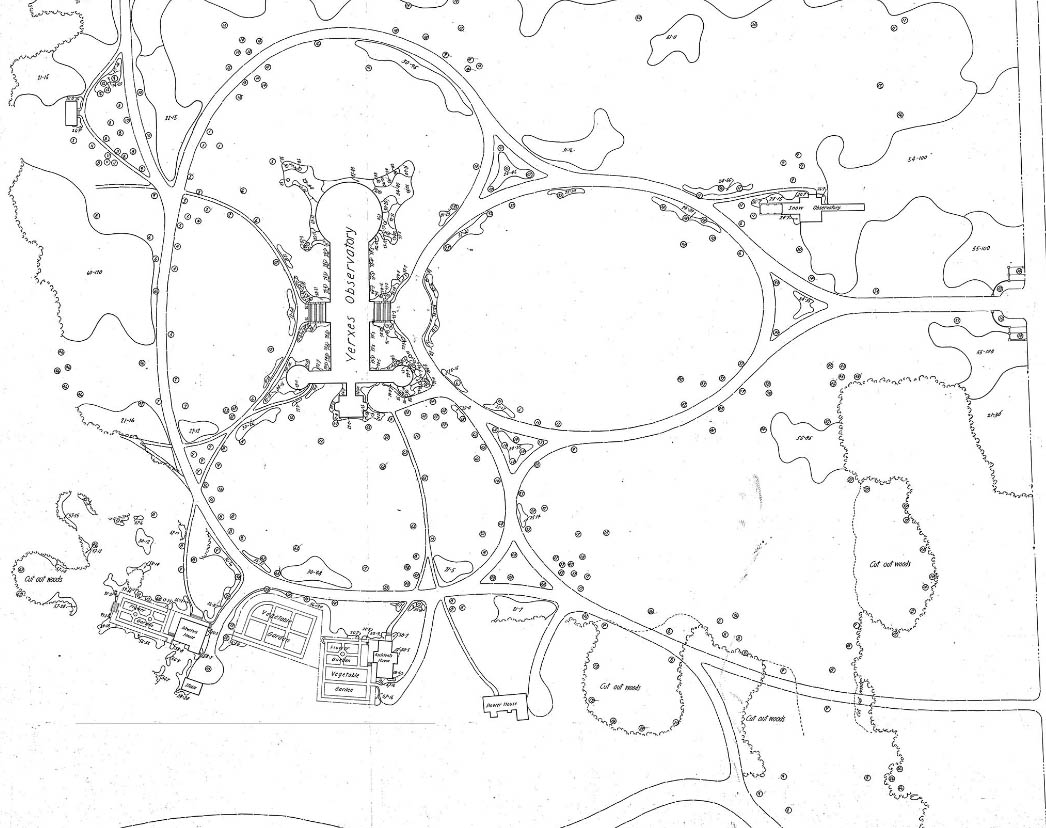
Original plan for the Yerkes Observatory grounds designed by Olmsted Brothers, 1894
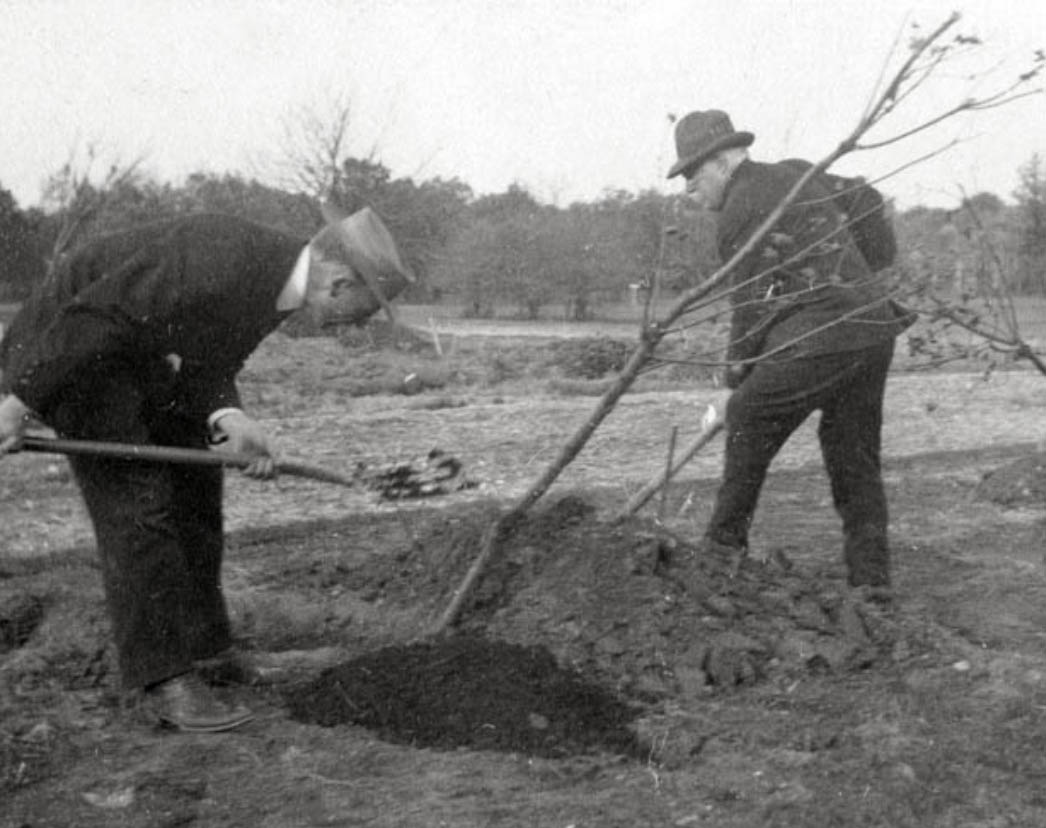
Seen here planting trees in 1916, world-famous astronomers Barnard and Barrett weren’t afraid to get their hands dirty to beautify the Yerkes campus.
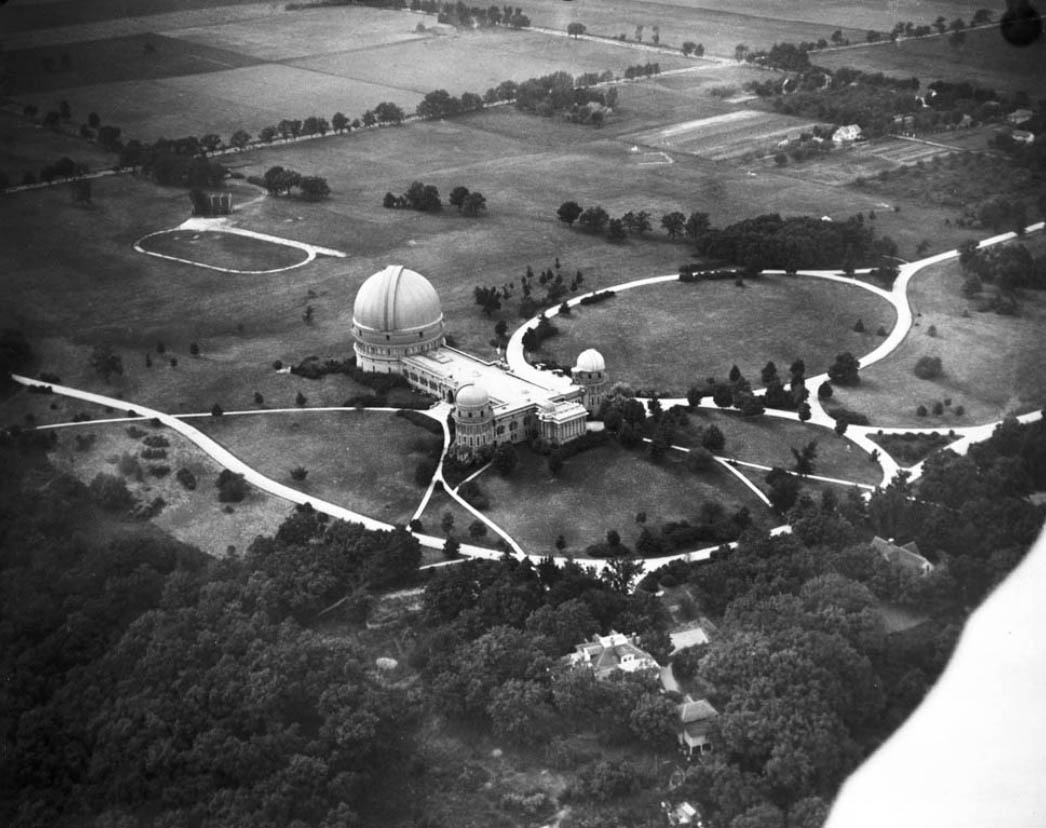
The botanical masterpiece as seen from an airplane in 1927. Note the body or wing of the aircraft in the bottom right.
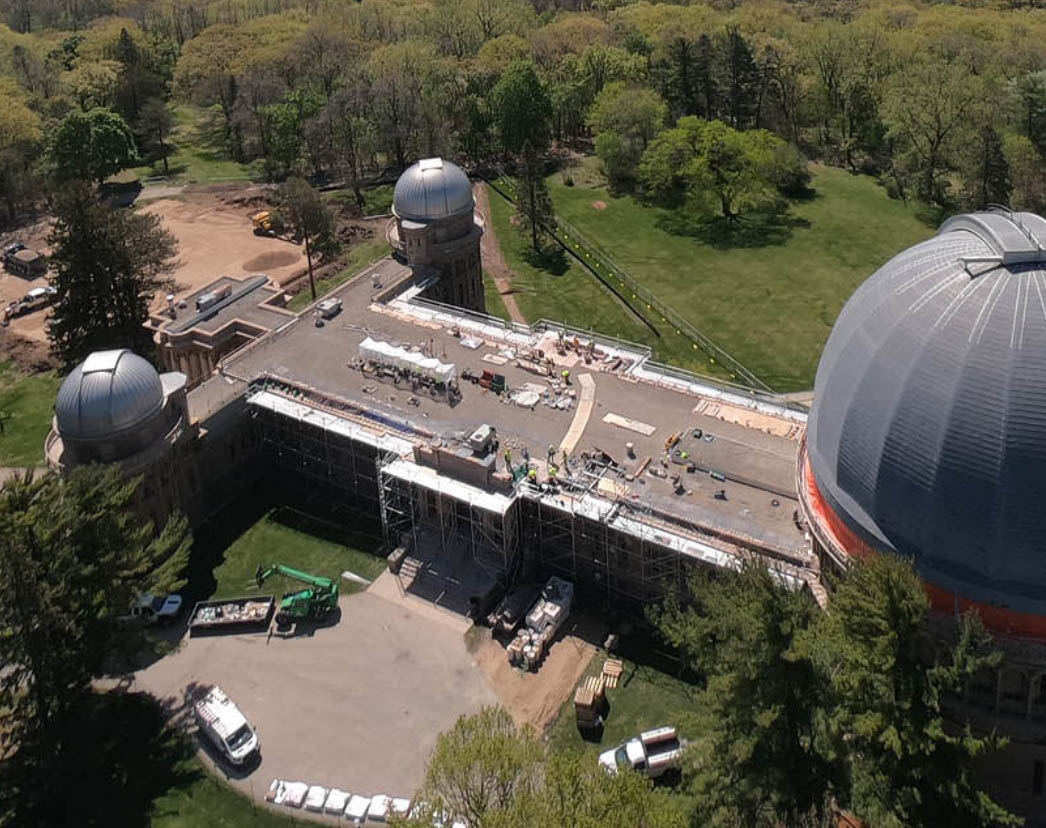
Here we are installing 83 solar panels on our roof to power the Observatory with the sun! Project complete. EV charging stations in our new lot.
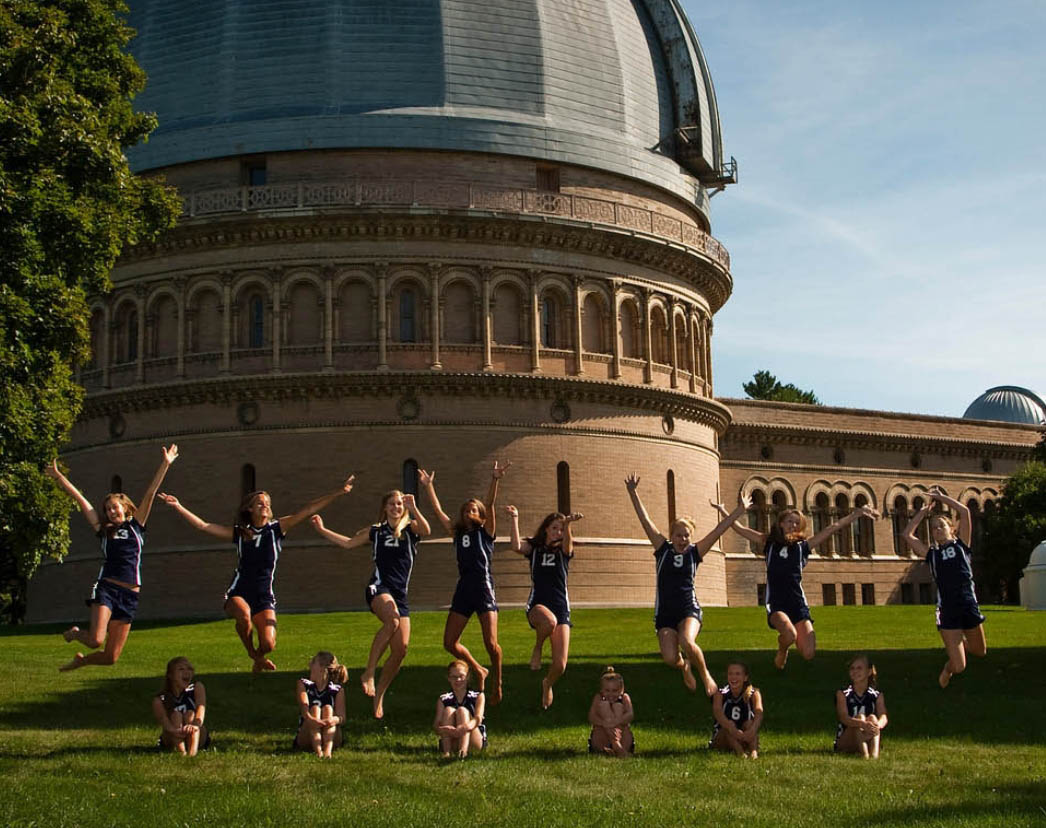
Come play in our yard.
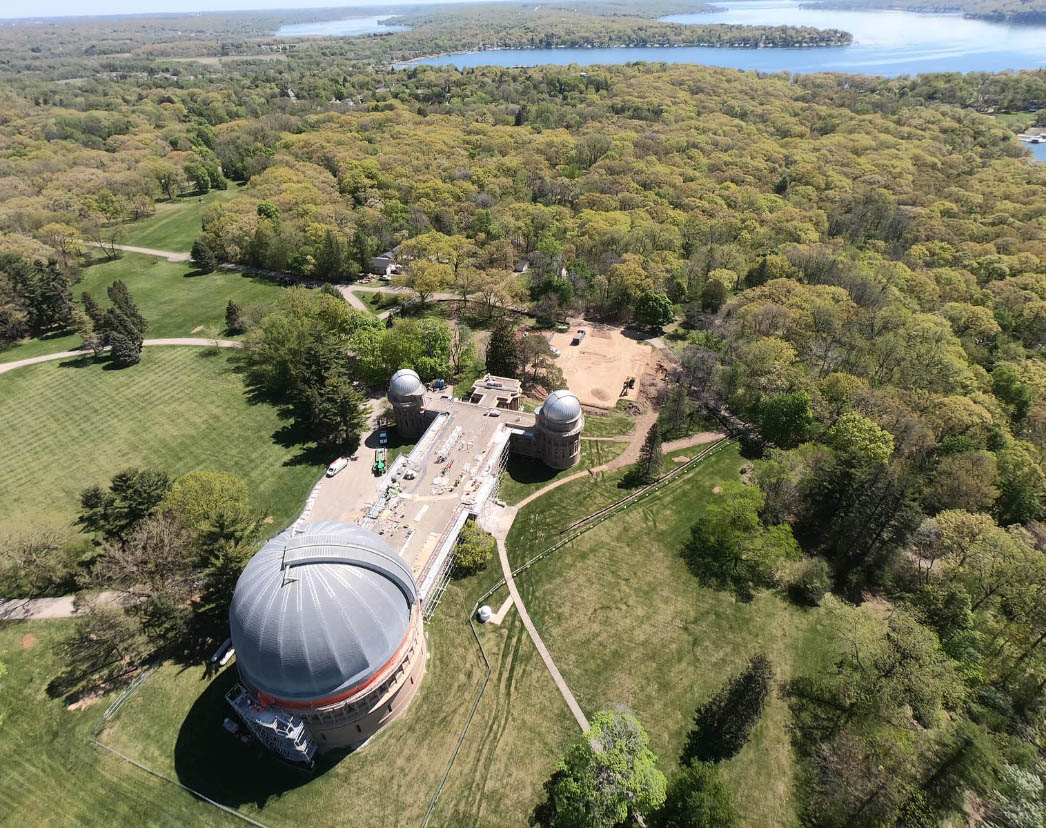
Sometimes the cosmos is looking at the astronomers.
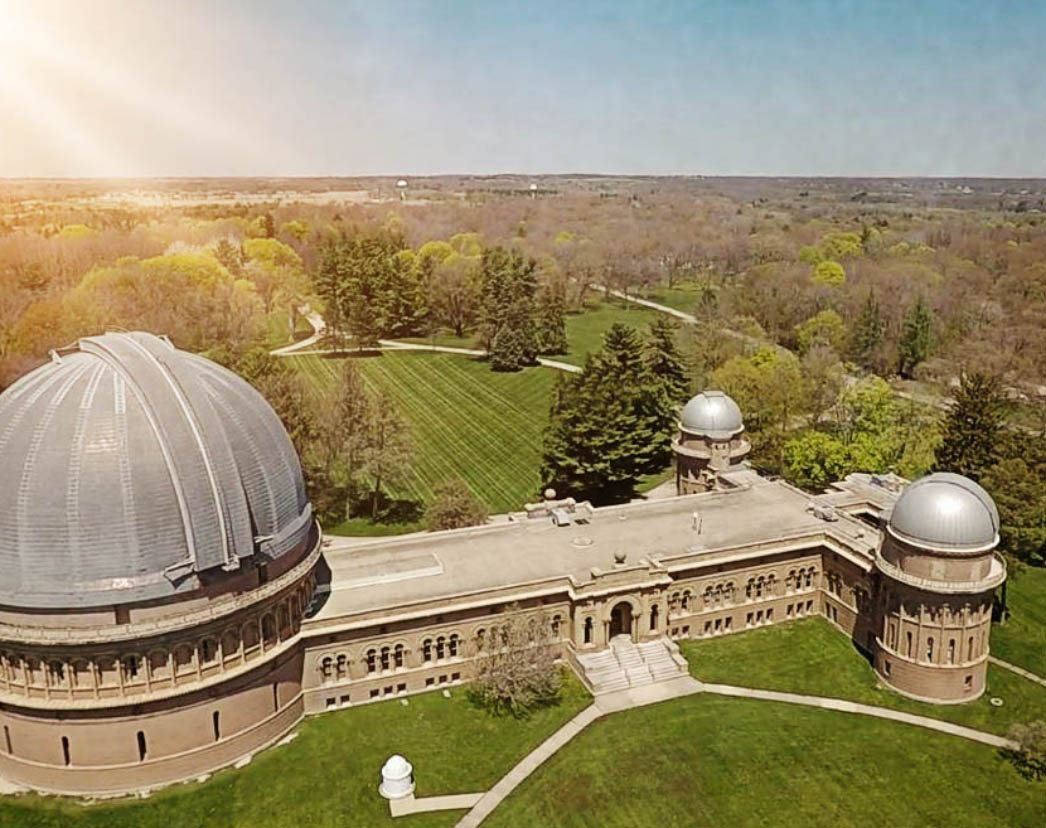
Our 50 acres were designed by the Olmsted Firm, the most famous landscape architects in American history. Come explore our new oak savannah, apiary, pollinator garden, bluebird houses, and flowers of many types. More metamorphosis on the way!
Who’s who.
Yerkes Observatory has been an international destination and home to some of the most accomplished astronomers, allied scientists, and scholars of the 20th century. Meet these greats.
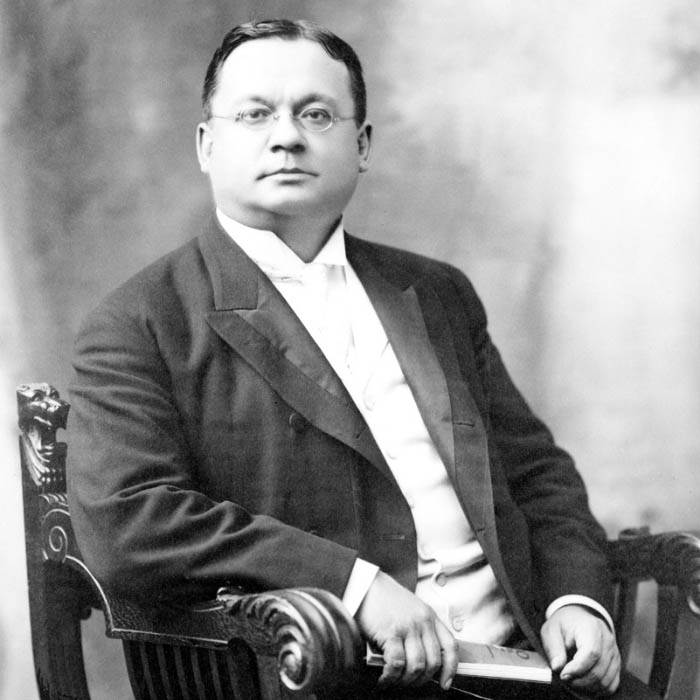
William Rainey Harper
First president, University of Chicago, 1890. Sought to develop a prestigious Department of Astrophysics and recruited George Ellery Hale to the faculty.
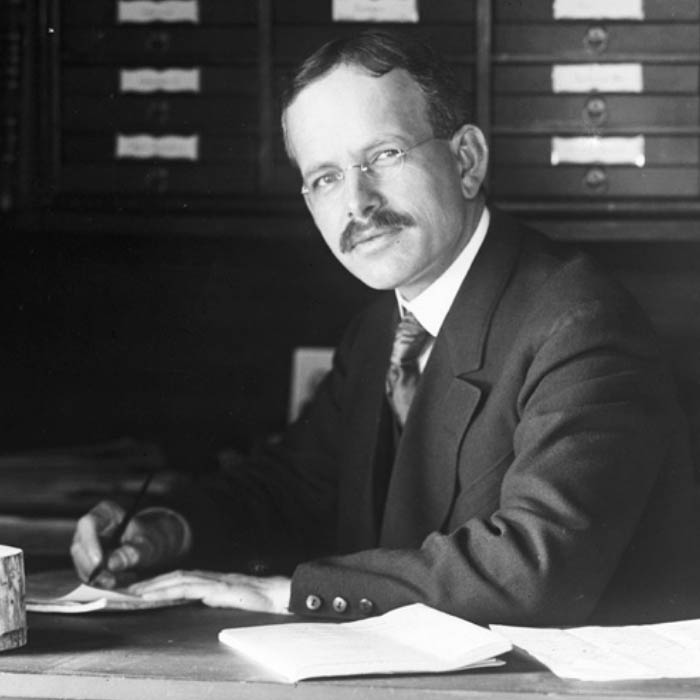
George Ellery
Hale
Associate Professor of Astrophysics, University of Chicago, 1893. Considered the father of Yerkes Observatory, which was designed from plans he had sketched.
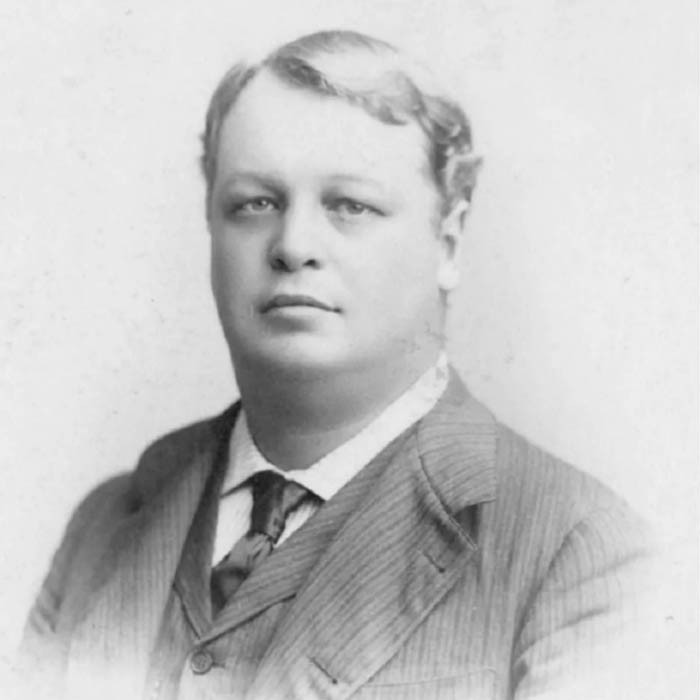
Henry Ives
Cobb
Architect, Yerkes Observatory, 1895. Designed many of the gothic-style building on the University of Chicago campus and brought a passion for classical style to the Yerkes project.
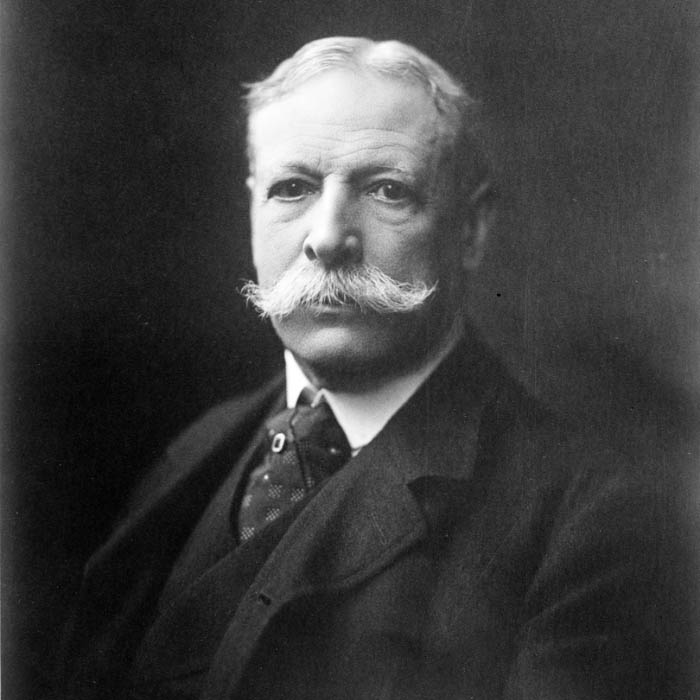
Charles Tyson
Yerkes
Major donor, 1892. A cutthroat financier who developed much of Chicago’s elevated railway, Yerkes saw an opportunity to rehabilitate his image by underwriting the initial construction costs of Yerkes Observatory.
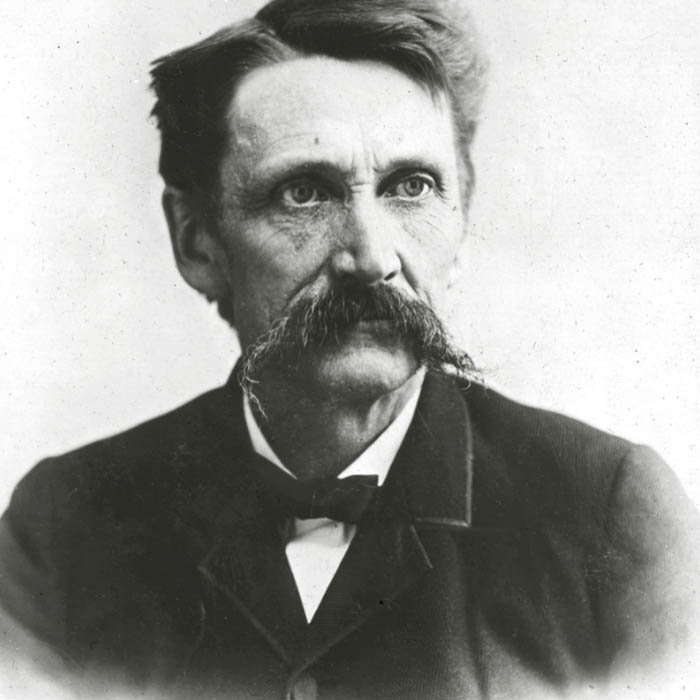
Sherburne W. Burnham
Astronomer at Yerkes, 1897-1914. Court reporter in Chicago by day, amateur astronomer at night, Burnham received an appointment at Yerkes in 1897, and is credited with discovering 1,340 binary stars.
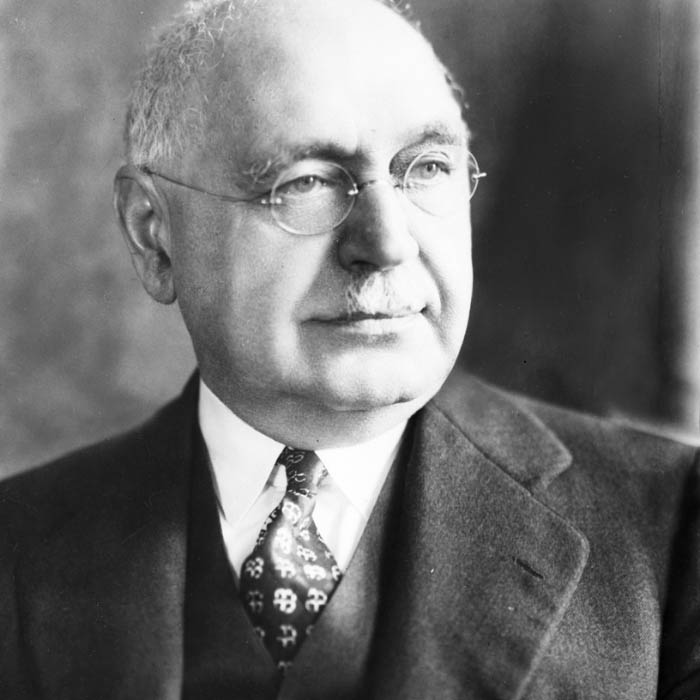
Frank
Schlesinger
Astronomer at Yerkes, 1903-1905. First served as a volunteer at Yerkes assisting George Ellery Hale in 1898, then was appointed astronomer from 1899 to 1903, pioneering the use of photographic methods to determine stellar parallaxes.
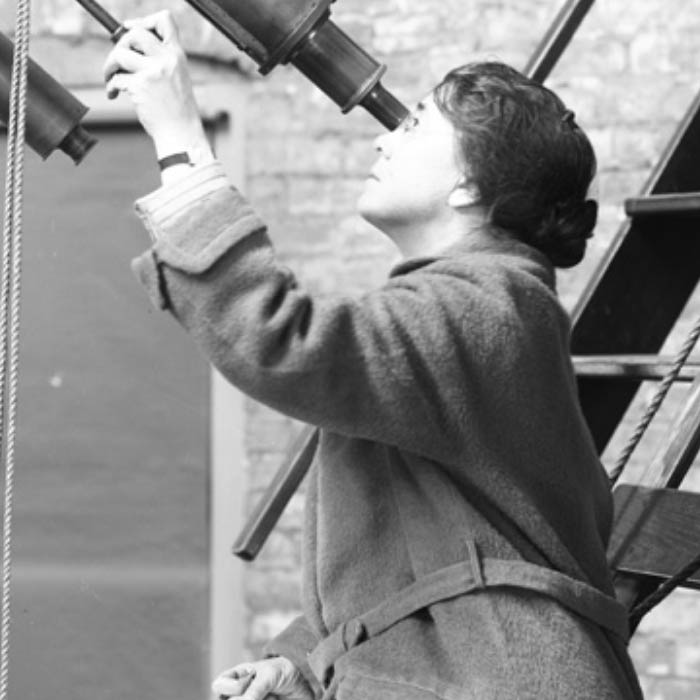
Mary Ross
Calvert
Astronomical computer and astrophotographer at Yerkes, 1905-1946. As a “computer” at Yerkes, Calvert was one of many women whose mathematical skills made the observatory’s work possible. She contributed to the cataloging of dark objects.
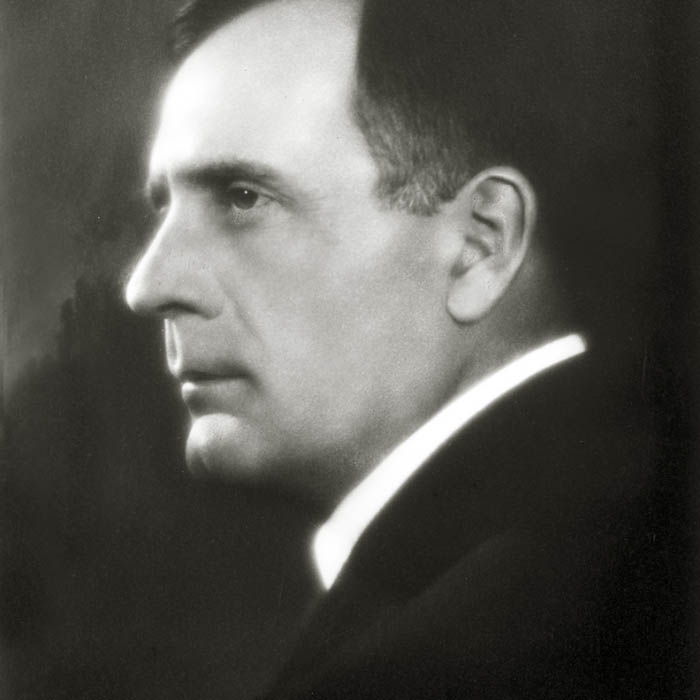
Edwin
Hubble
Graduate student at Yerkes, 1914-1917. A talented athlete, Hubble was also a student of the law, Spanish and literature before entering graduate school at the University of Chicago to study astronomy. The Hubble Space Telescope was named in his honor.
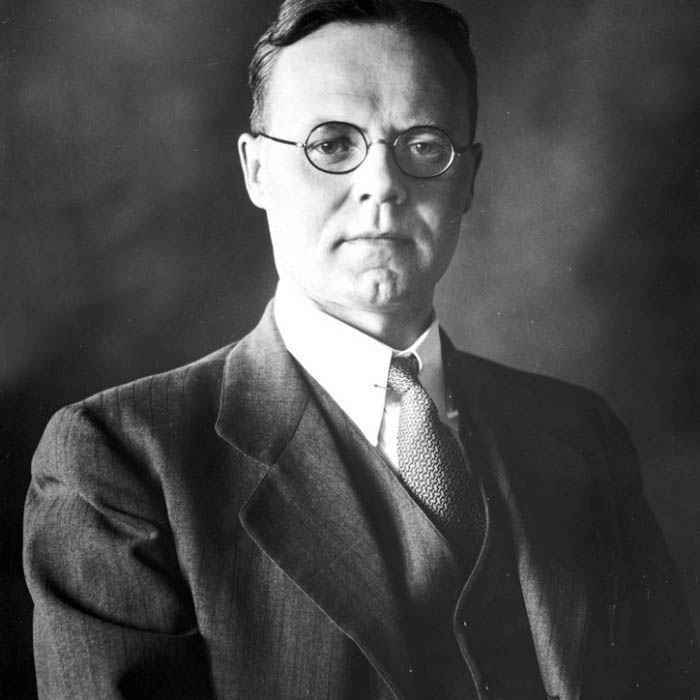
Otto
Struve
Astronomer at Yerkes, 1921-1947. Struve came to America an impoverished Ukrainian refugee of the Russian Revolution and worked as an observatory assistant for $75 a month. Only 11 years later, he had earned his Ph.D. and become observatory director.
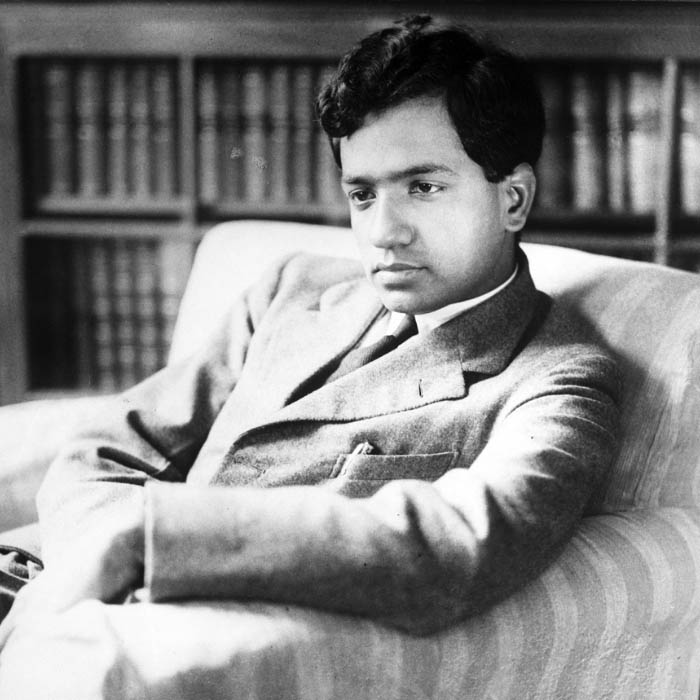
Subrahmanyan Chandrasekhar
Astronomer at Yerkes, 1936-1950. Recruited from India by Otto Struve. Known as “Chandra” to his friends, he made groundbreaking contributions to our understanding of stellar dynamics, stellar structure, and other astronomic concepts.
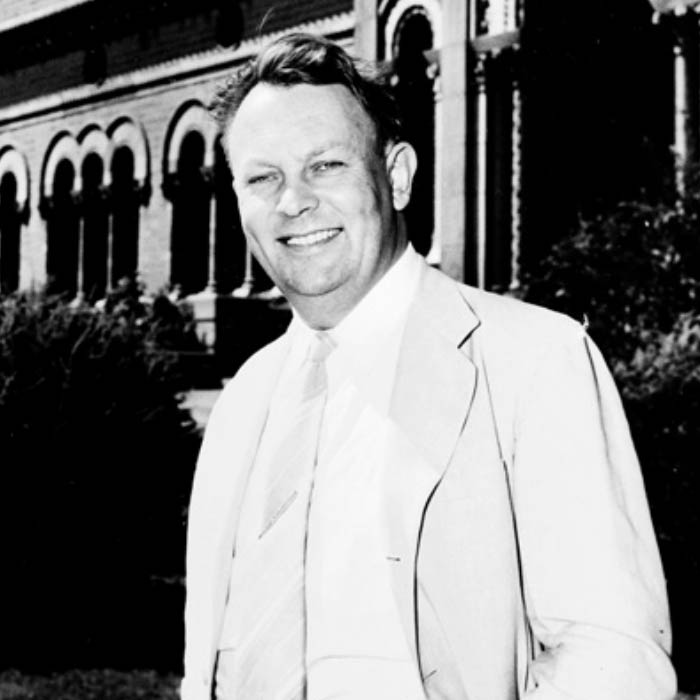
Gerard Kuiper
Astronomer and twice director, 1937-1960. Considered the father of planetary science, Kuiper’s research led to the discovery of the region outside of Neptune’s orbit known as the Kuiper Belt. He identified lunar landing spots for NASA’s Apollo program.
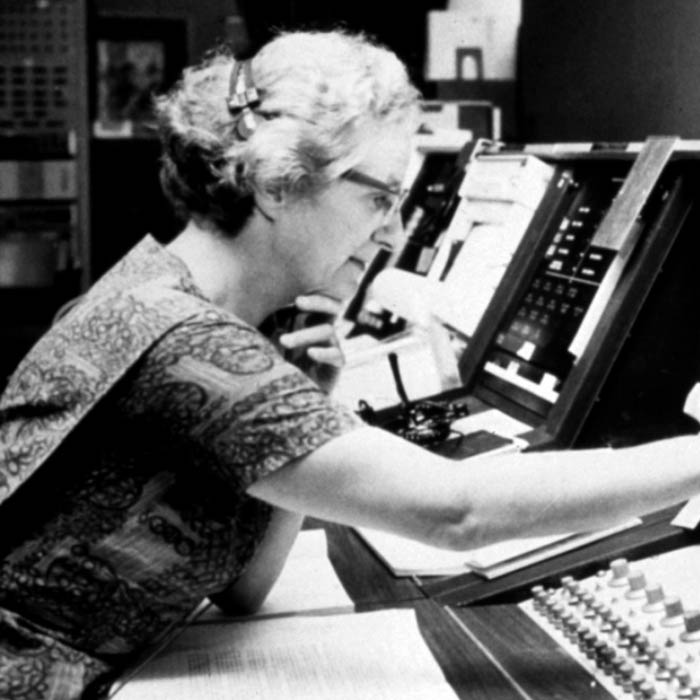
Nancy Grace
Roman
Graduate student and research assistant at Yerkes, 1946-1954. Breaking through barriers as a woman in astronomy, Roman focused her research at Yerkes on stellar spectroscopy. She later became the first-ever Chief of Astronomy at NASA.
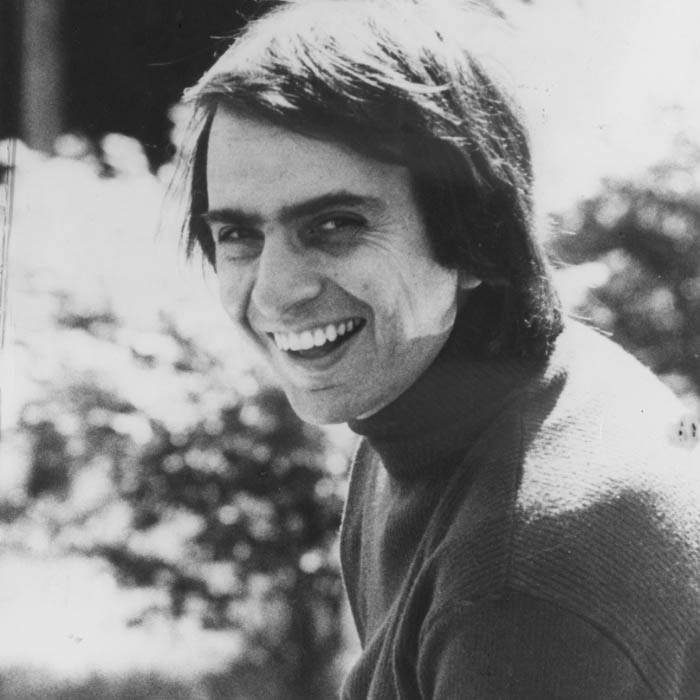
Carl
Sagan
Graduate student, 1956-1960. While a Ph.D. student at Yerkes, Sagan worked with planetary scientist Gerard Kuiper. In addition to being an astronomer and professor, Sagan was a television personality and best-selling author who popularized astronomy to diverse audiences.
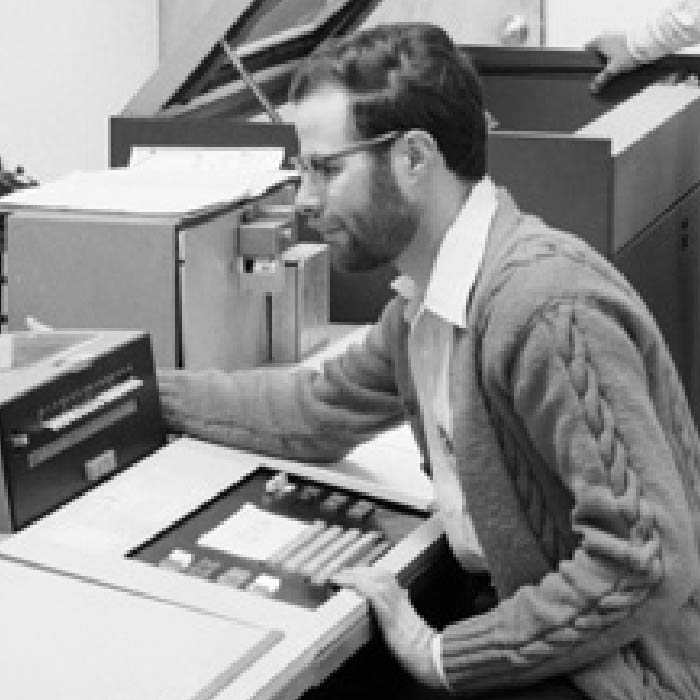
Kyle
Cudworth
Astronomer at Yerkes, Director of Yerkes, 2001-2012. Cudworth compared photograph images of star clusters taken 80 years apart to measure star movement within the clusters. His observations facilitated estimating the distances to the clusters.
Tracking the milestones.
At almost every turn, astronomical and scientific history was made at Yerkes. Follow the path of these important developments.
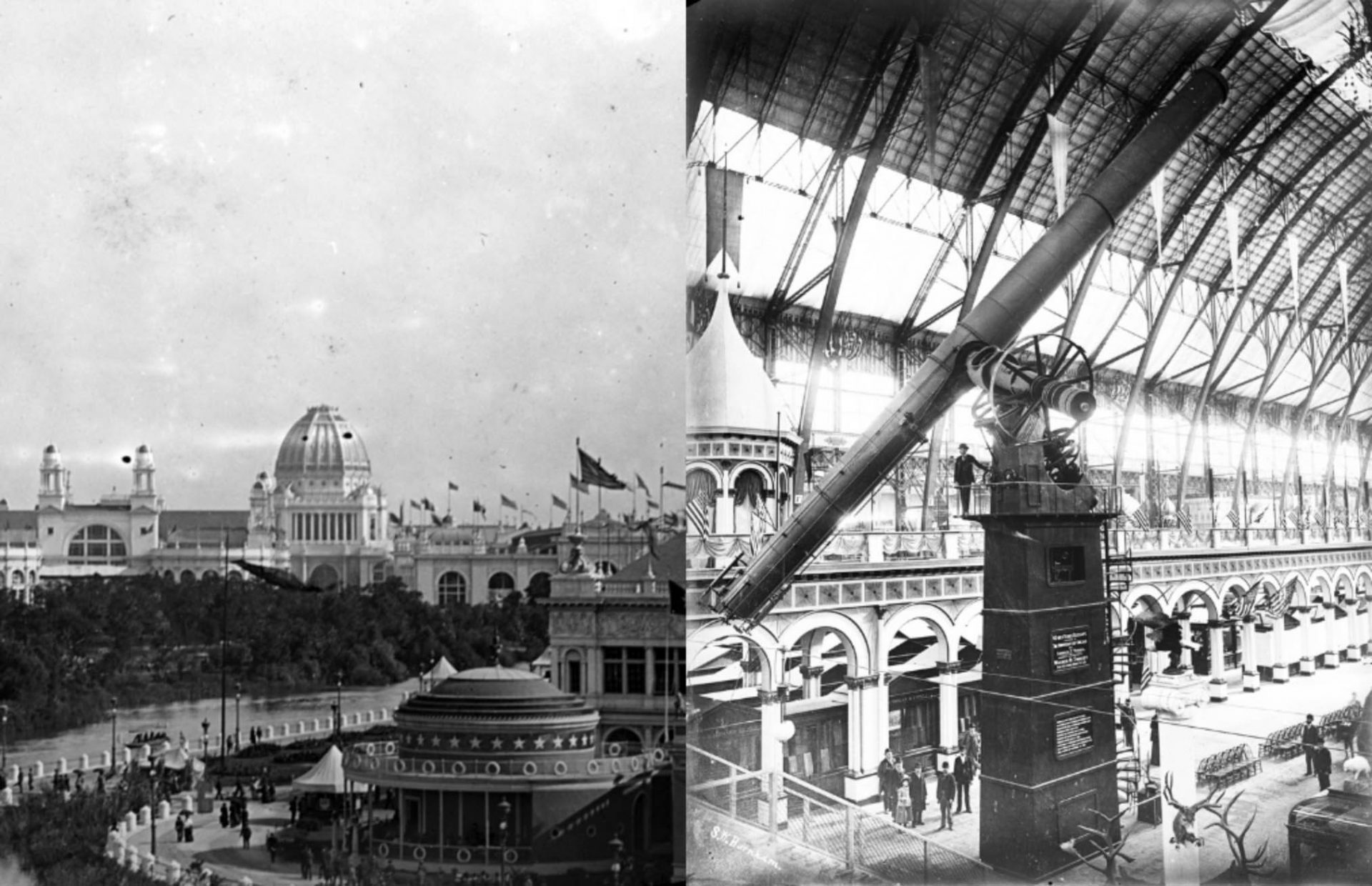
Yerkes Observatory 40-inch refractor telescope on display at the 1893 Columbian Exposition in Chicago.
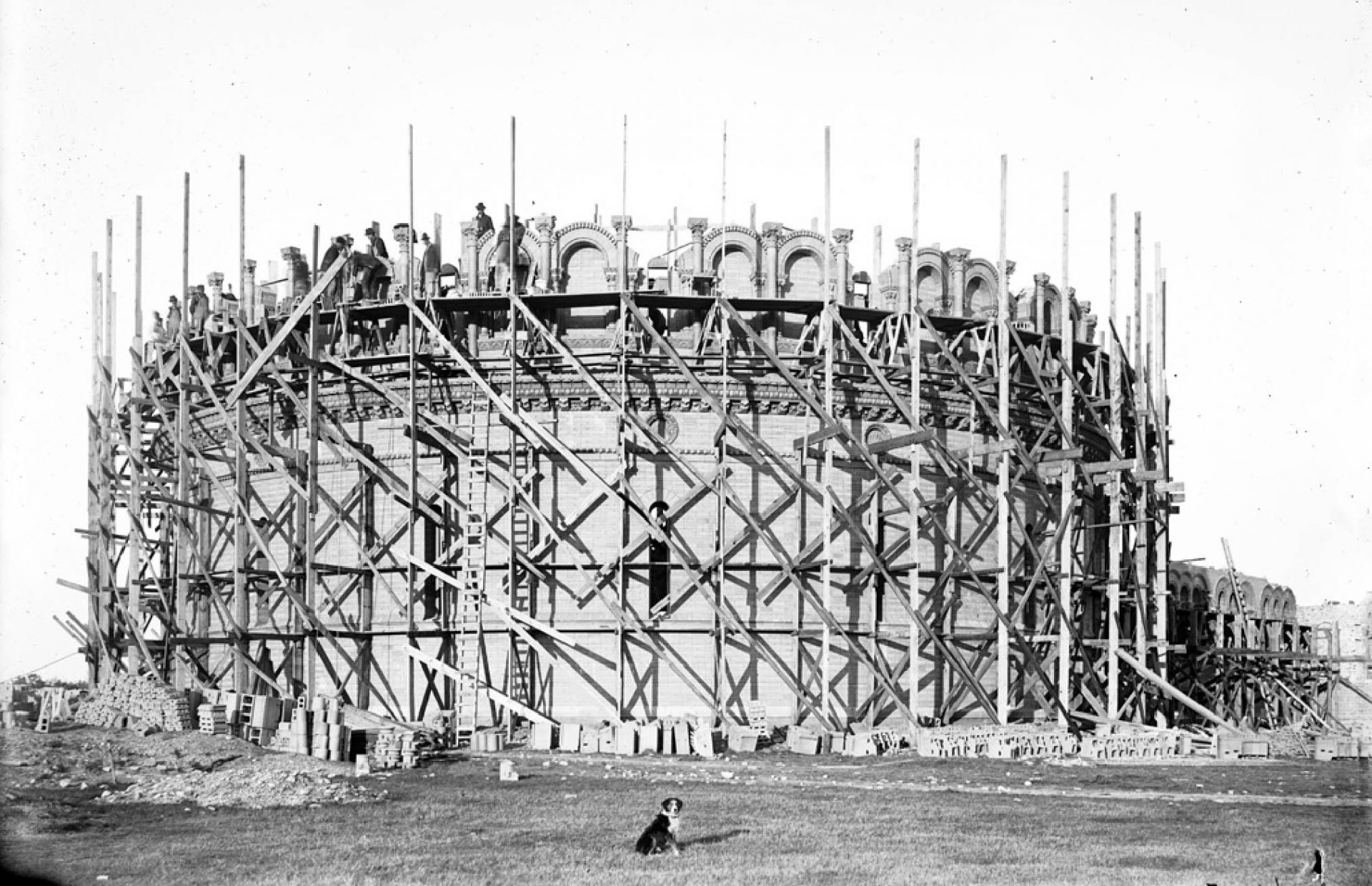
Sirius, the dog of Evelina and George Ellery Hale, seated in front of the partially-constructed Yerkes Observatory dome, summer of 1895.
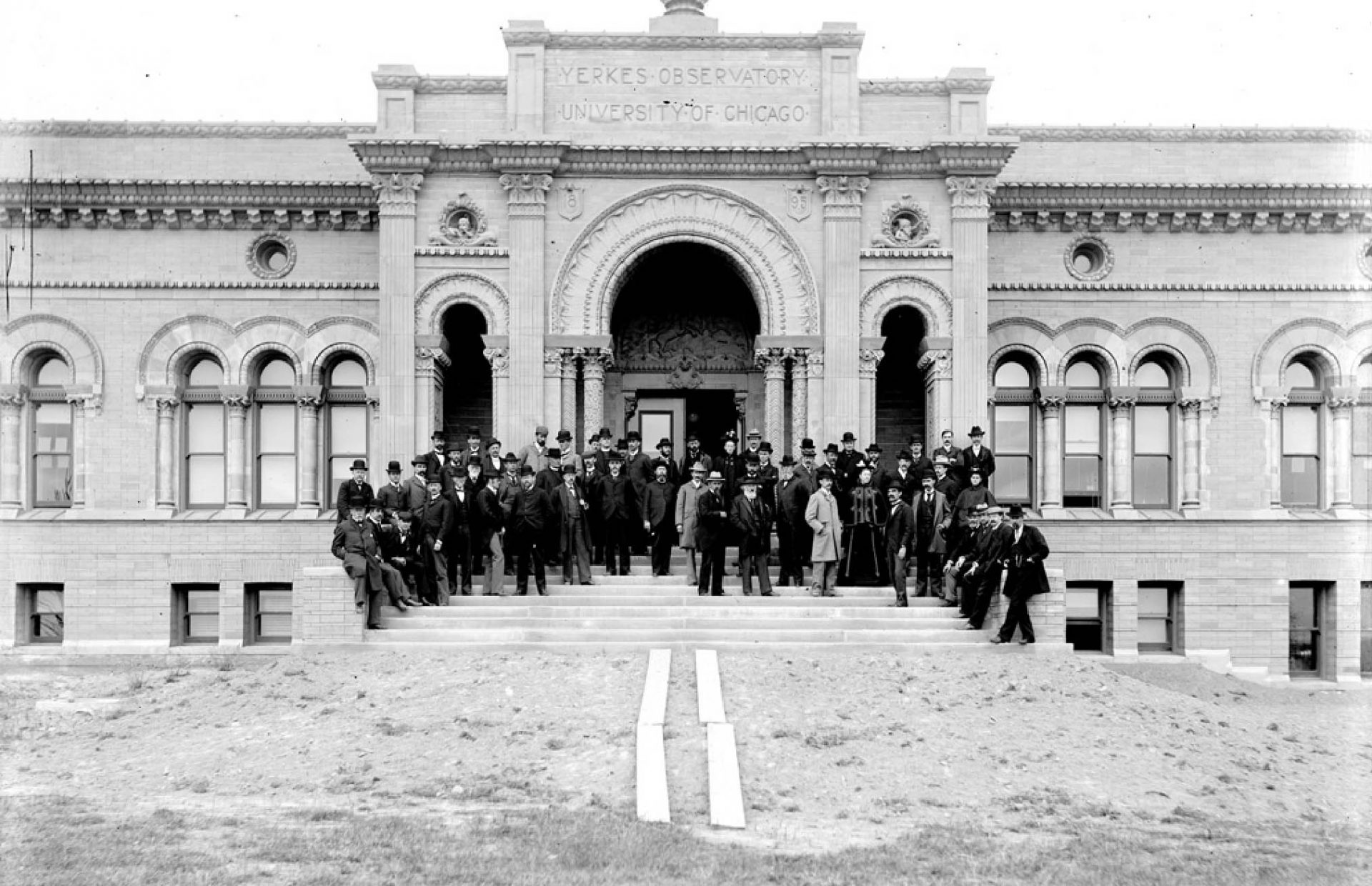
Attendees of the Yerkes Observatory dedication and first conference of astronomers and astrophysicists. Held the week of October 18-22, 1897, the program was organized by George Ellery Hale, Yerkes director.
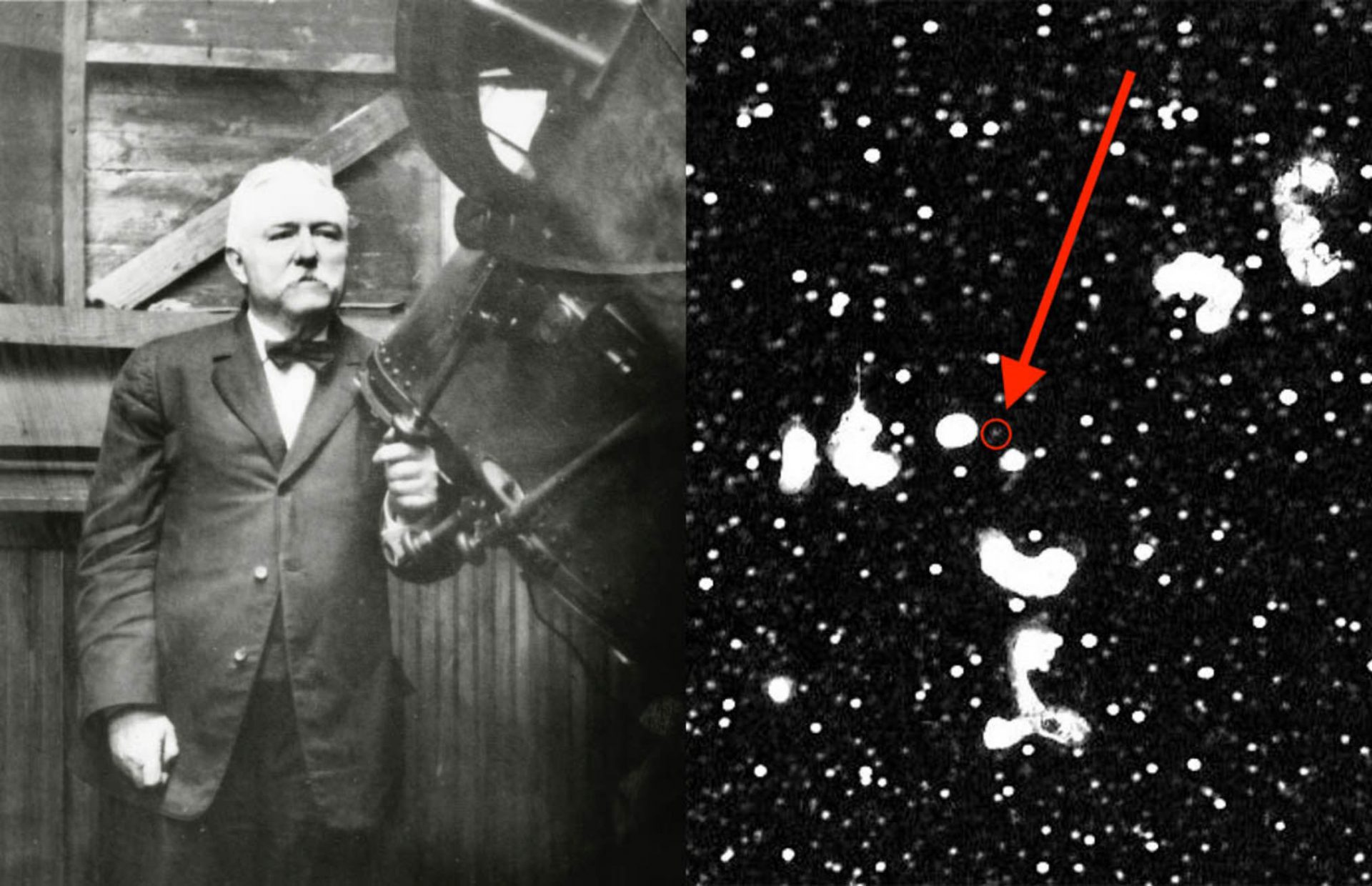
Edward Bernard wasn’t even looking for planets when he trained the telescope to survey a region around Halley’s Comet. He took a wide-field exposure for over an hour, stored the plate, and recorded it in his logbook.
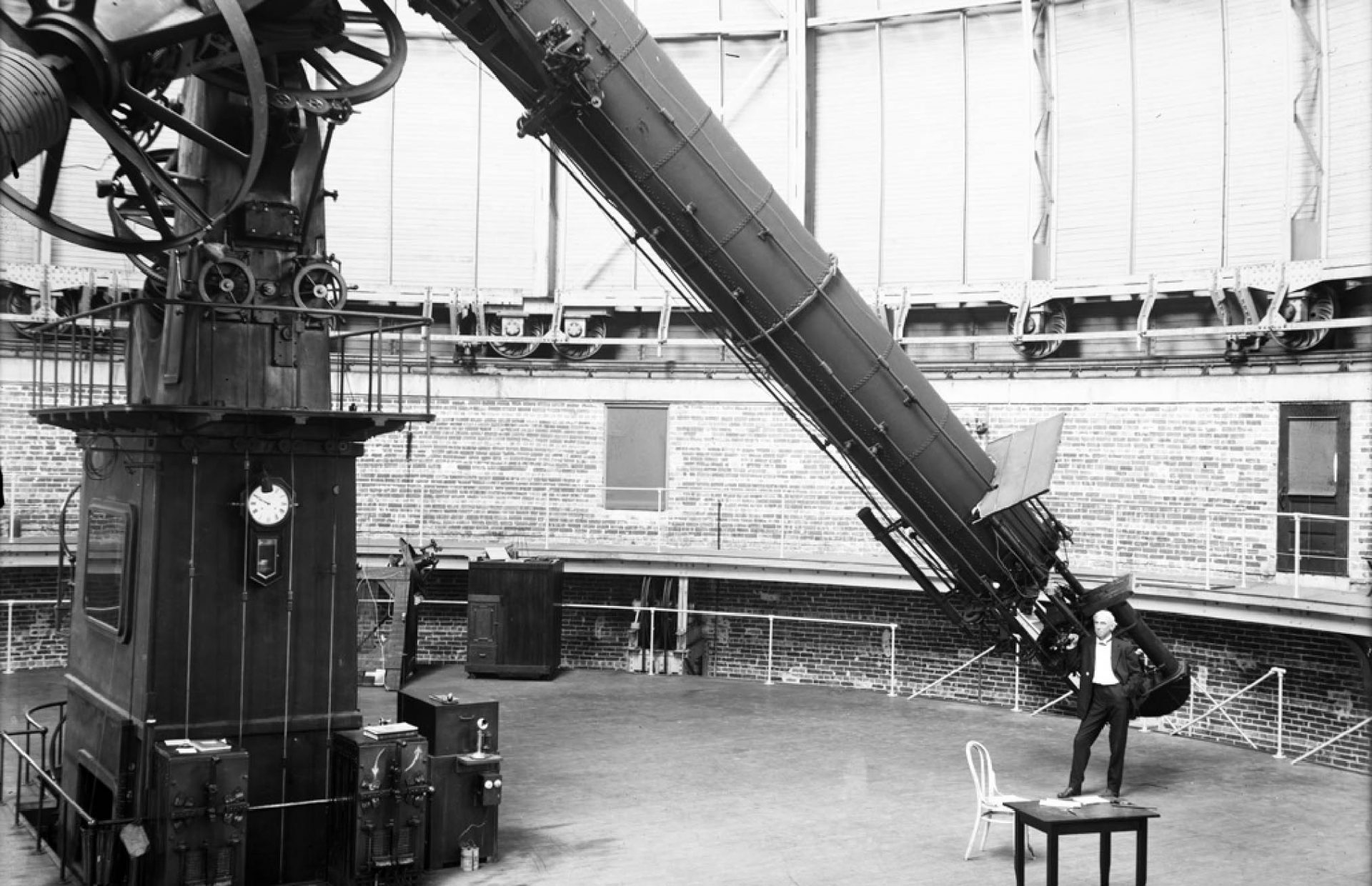
The Great Refractor, the world’s largest lens telescope, was the largest astronomical telescope in the world. It was succeeded in size by the 60” diameter reflecting telescope at Mt. Wilson Observatory in California.
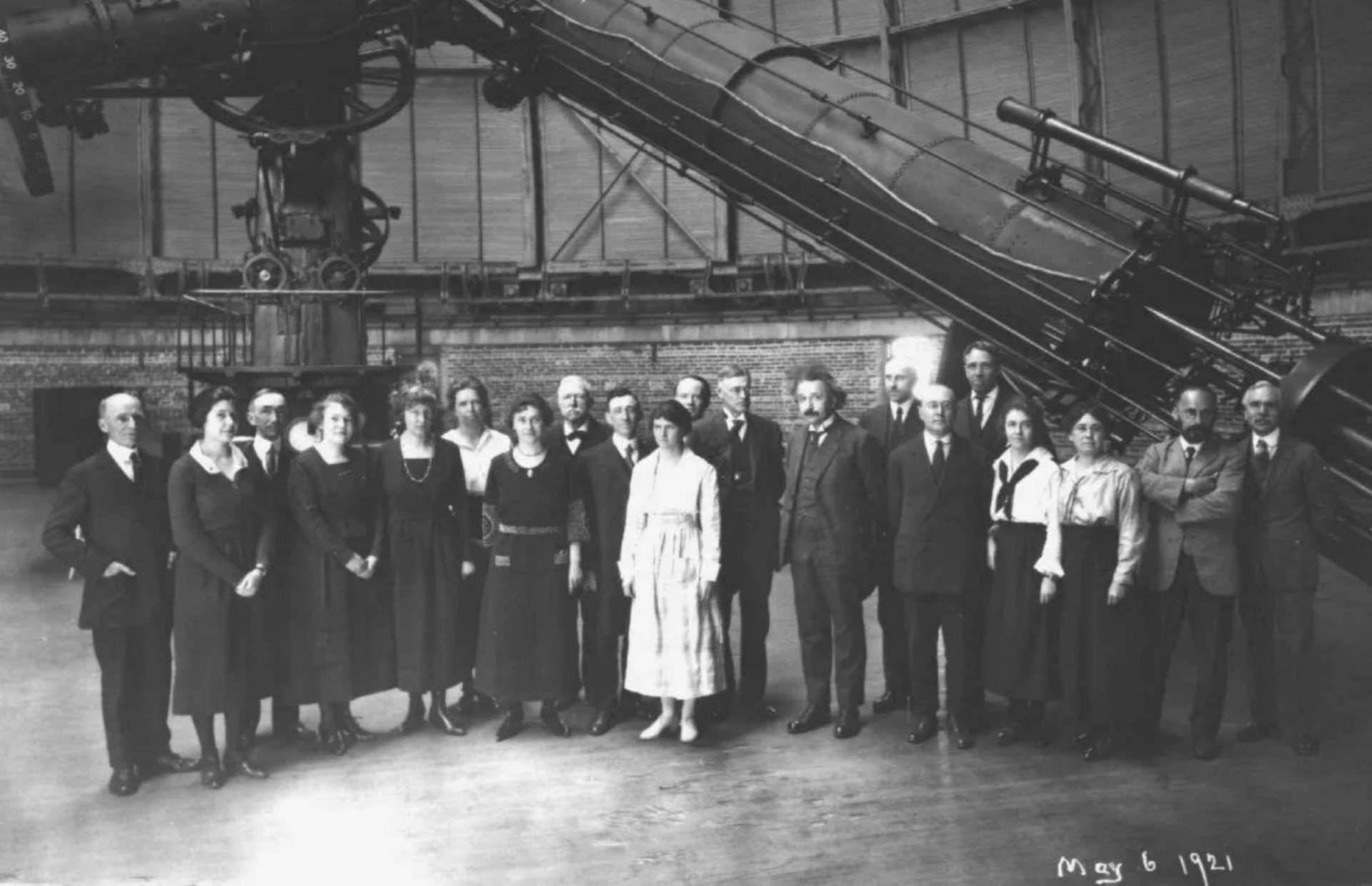
Albert Einstein, the staff and faculty of Yerkes Observatory, and other visitors photographed underneath the 40-inch refractor telescope.
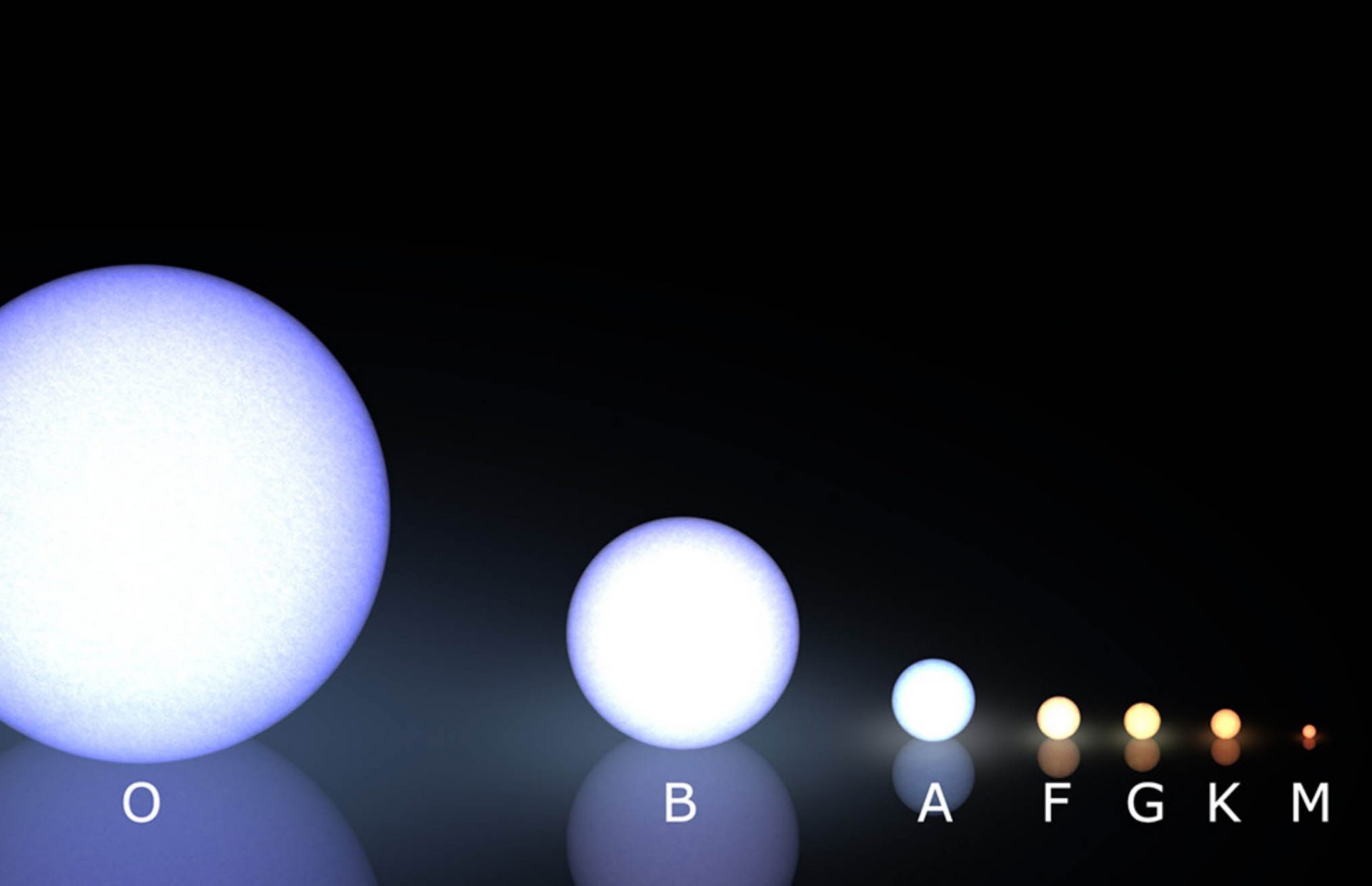
Most stars are currently classified under the Morgan–Keenan (MK) system using the letters O, B, A, F, G, K, and M, a sequence from the hottest (O type) to the coolest (M type). Introduced in 1943 by William Wilson Morgan, Philip C. Keenan, and Edith Kellman from Yerkes Observatory.
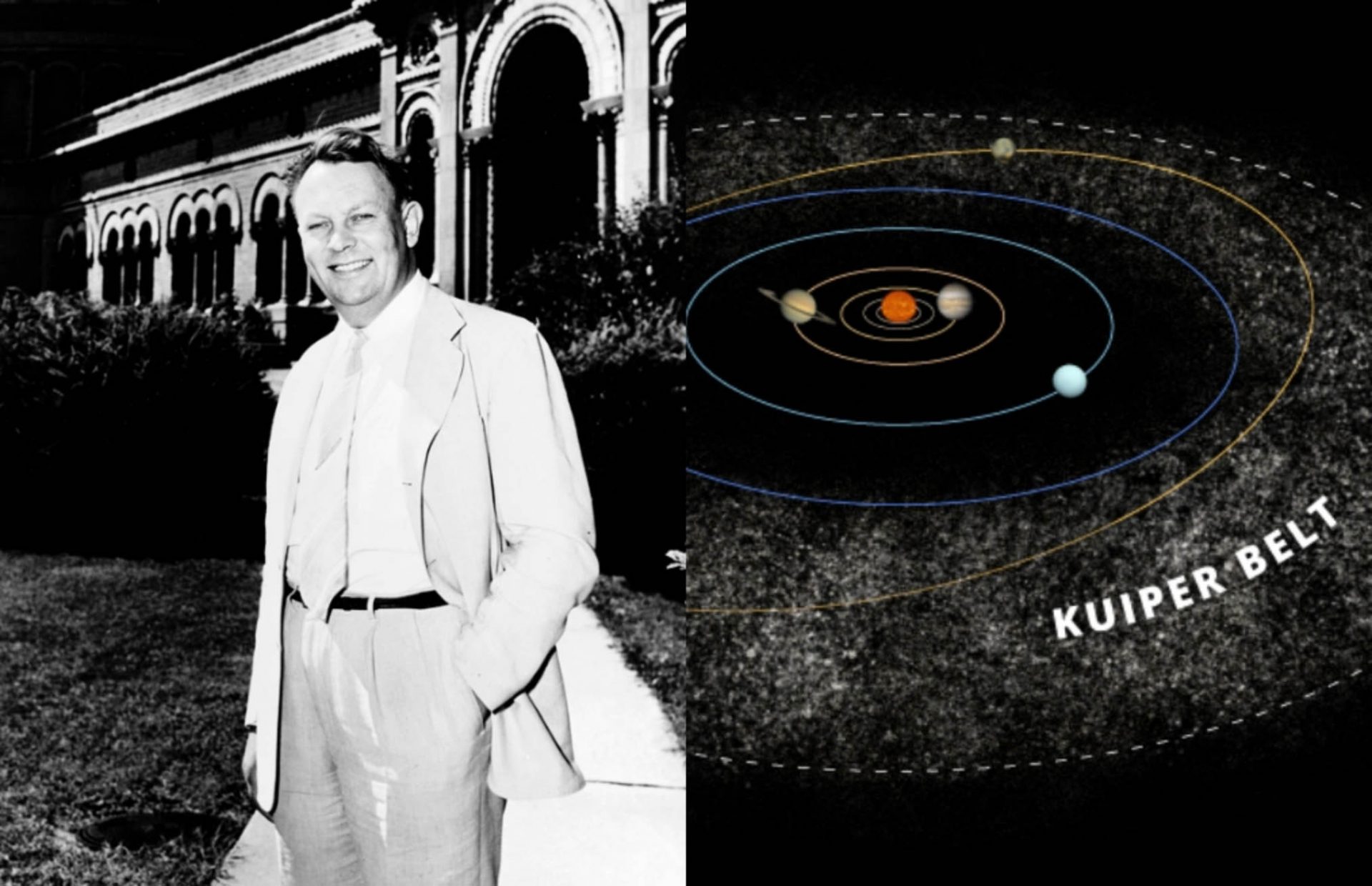
Kuiper proposed that a belt of icy bodies might lie beyond Neptune. His solution was a population of dark comets circling the sun in the realm of Pluto—leftovers from the dawn of our solar system when planetesimals were coalescing to make planets. The ones beyond Neptune, he speculated, never stuck together, remaining instead primitive and individual. Nowadays they occasionally fall toward the sun, becoming short-period comets.
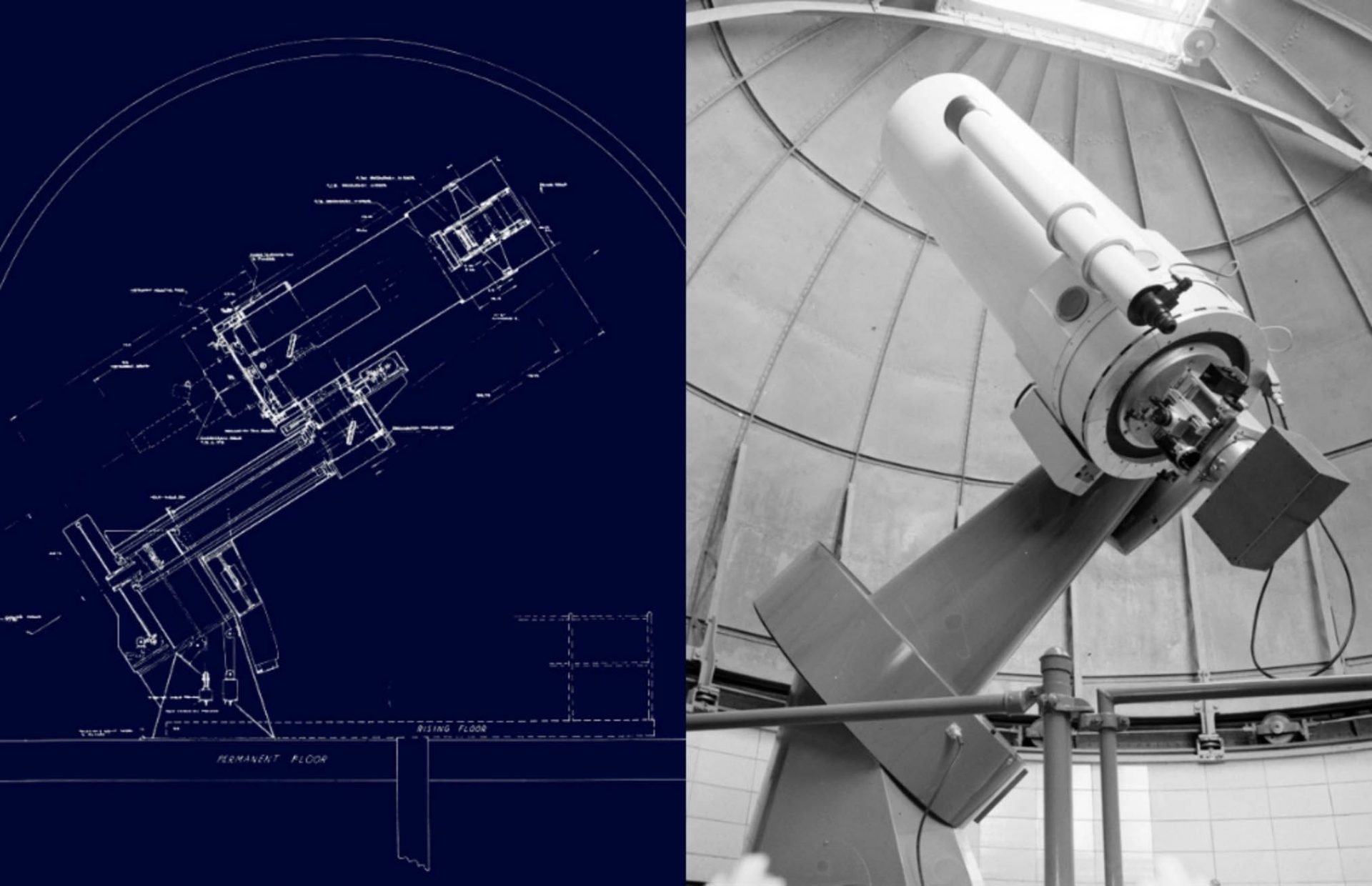
Technical drawing and photo of the completed Yerkes Observatory 24-inch Boiler and Chivens reflector telescope.
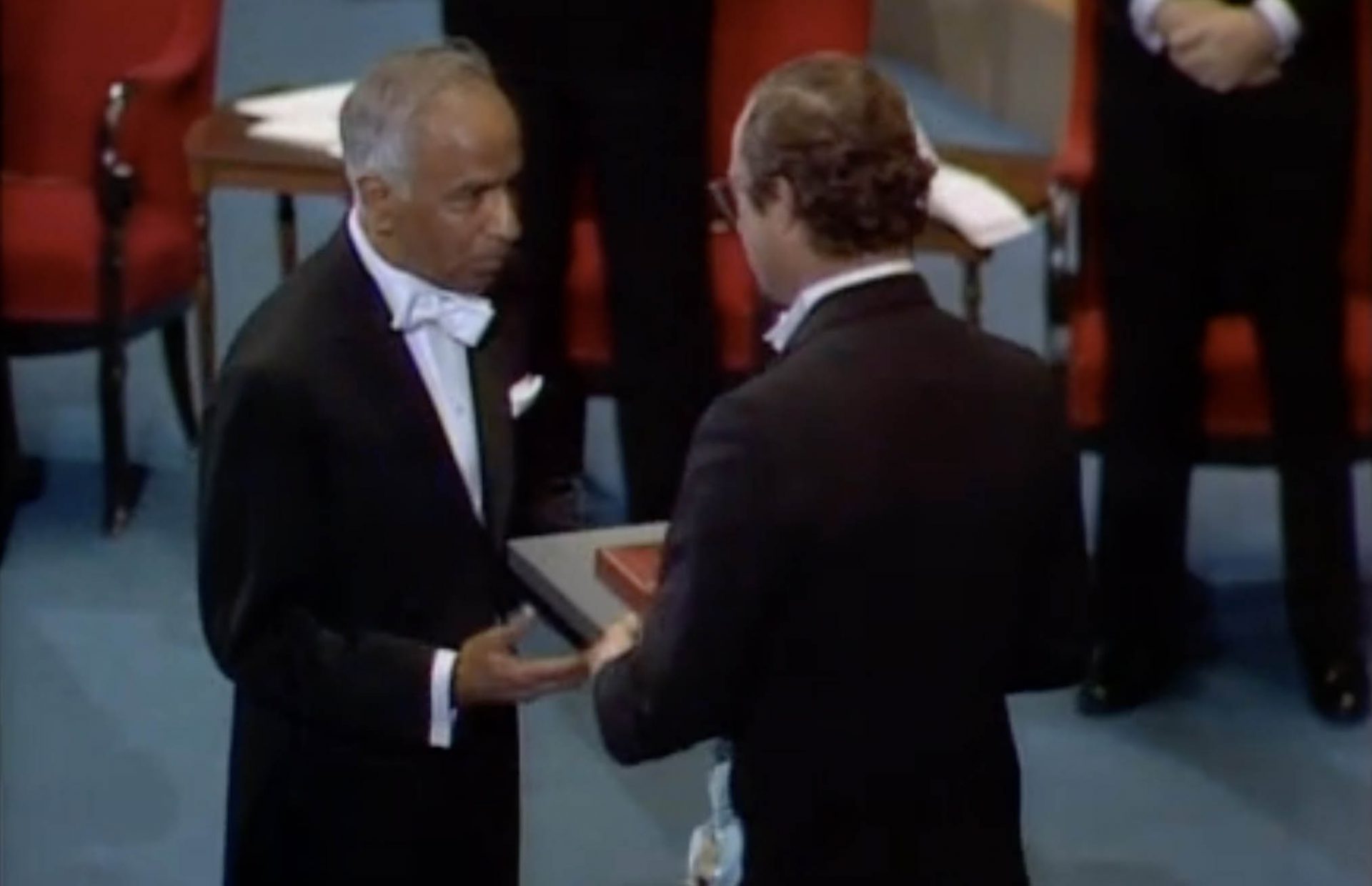
1983 Nobel Laureate in Physics, Subramanyan Chandrasekhar, receiving his Nobel Prize medal and diploma during the Nobel Prize Award Ceremony at the Concert Hall in Stockholm, Sweden, on December 10, 1983.
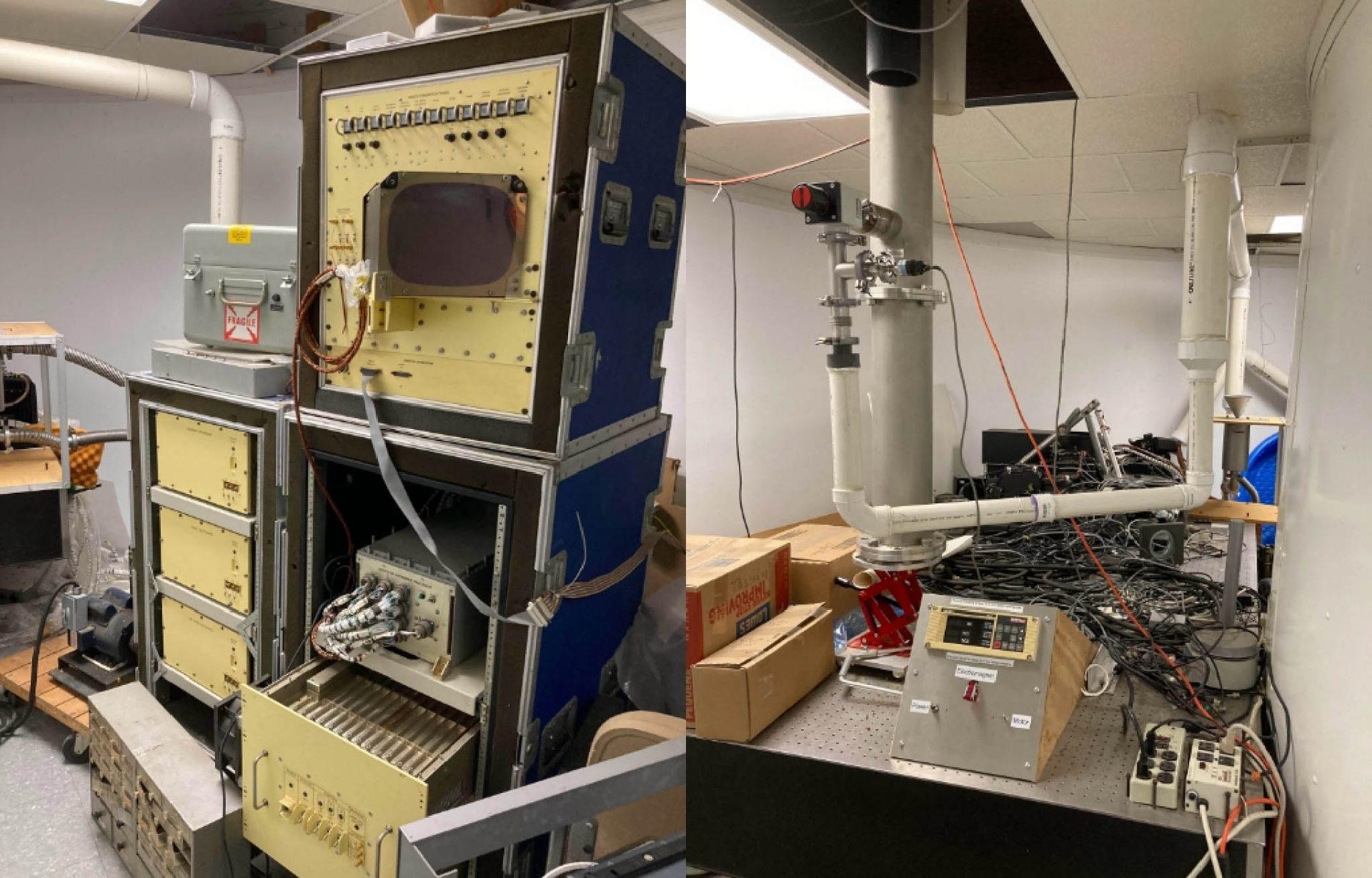
Components from the Star Wars program used to develop adaptive optics, which employs computer-controlled mirrors to correct for the distortion in imaging stars caused by the turbulence of earth’s atmosphere. So sorry, twinkling little stars.
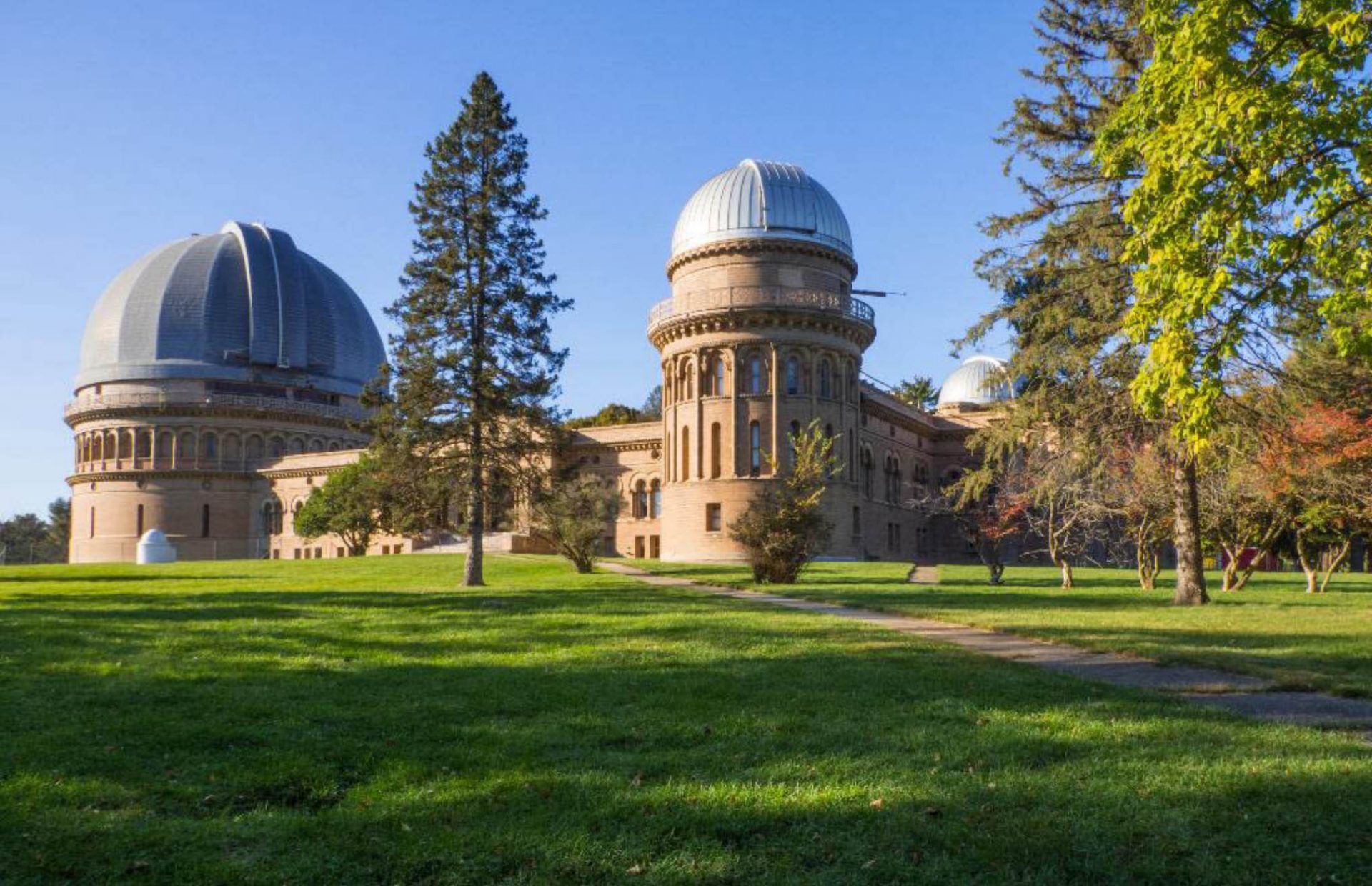
University of Chicago owned Yerkes Observatory until May 1, 2020, when it donated the Observatory and 50 acres of land to Yerkes Future Foundation. An independent, charitable, nonprofit organization, it is raising funds to renovate the facility and for educational and arts programs.
-
1893
The tube of the Great Refractor exhibited at the 1893 Columbian Exposition in Chicago.
-
1895
Construction of Yerkes Observatory begins.
-
1897
Yerkes opens and is officially handed over to the University of Chicago.
-
1909
First-ever photograph of Pluto inadvertently taken at Yerkes; not recognized as notable at the time.
-
1911
Yerkes superseded as world’s largest telescope by Mt. Wilson Observatory reflector.
-
1921
Albert Einstein visits Yerkes.
-
1943-53
Yerkes spectral classification, later called the Morgan-Keenan classification system, is developed at Yerkes.
-
1951
Gerard Kuiper proposes existence of what is now called the Kuiper Belt, a dark-shaped region of icy objects home to Pluto.
-
1960s
Yerkes adds two reflecting telescopes to the towers on the eastern end of the building.
-
1983
Subrahmanyan Chandrasekhar awarded the Nobel Prize for Physics for his work on the structure of stars.
-
1991
Research at Yerkes using leftover components from Star Wars (Reagan-era program) leads to the invention of adaptive optics.
-
2020
The University of Chicago transfers Yerkes Observatory and 50 acres of land to Yerkes Future Foundation.
Keep Yerkes open for a new generation of explorers
Help us continue
the legacy.
More than a century ago a determined founder, masterful architect, skilled trades workers, diligent engineers, and inventive entrepreneurs built Yerkes. Visionary scientists put it on the galaxy’s map. A dedicated group of locals saved Yerkes for future generations. And now we look to you. Please consider becoming a contributor and friend of Yerkes Observatory. Your participation means everything.
Want to talk about an estate or legacy gift? Want to see if you can help us with your time as a volunteer?
Email Us